For many, the Oxford shoe is considered the most formal of everyday men’s boots and shoes. both formal and casual. But what exactly is an Oxford shoe, where did it come from, and how can you wear it in the 21st Century? This guide holds all you’ve ever wanted to know about Oxford shoes.
Oxford Shoes, the Video Guide
In our companion video guide, Raphael will share with you some tips, tricks, and advice about men’s Oxford shoes.
What is an Oxford Shoe?
Unlike most other shoes and items of menswear, the Oxford shoe is unique due to its principal defining characteristic: the lacing system. Sometimes people use the term Oxford to denote any style of lace-up dress shoes, including Derbies and Bluchers, but that’s not strictly true.
Oxford, Derby, or Blucher…what’s the correct term to use?
By breaking down the Oxford shoe into its various components, you can see how it differs from other types of dress shoes on the market:
Oxford Shoe Construction
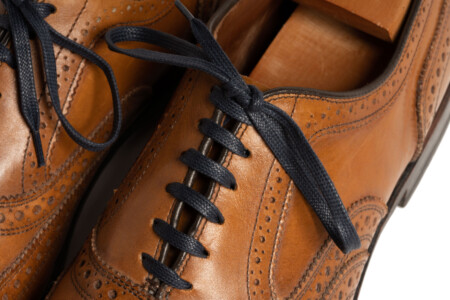
Laces
An Oxford shoe possesses a laced closure, unlike a slip-on shoe such as a loafer, or a buckled Monkstrap shoe. Not only are the laces integral to the Oxford shoe’s makeup, but the lacing system is particularly characteristic, as they are “closed” laces.
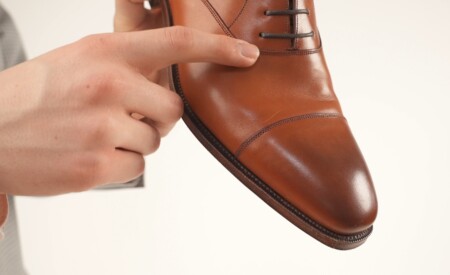
Vamp
The vamp is that part of the shoe’s uppers that covers the toes and instep, or, “the front” of the shoe. On an Oxford, the vamp is typically one solid piece of material, although it is possible to see other decorative pieces added.
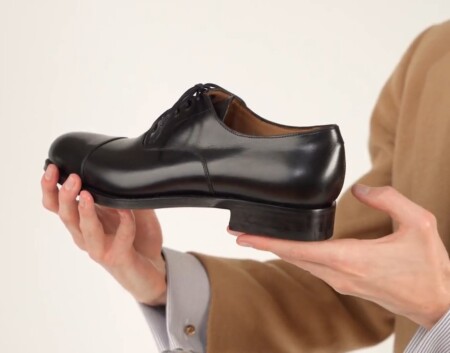
Quarters
The quarters are that part of the shoe uppers that wrap around the heel and meet the vamp in the middle of the foot. If the vamp is considered to be “the front” of an Oxford shoe, then the quarters can be considered as “the back” of the shoe.
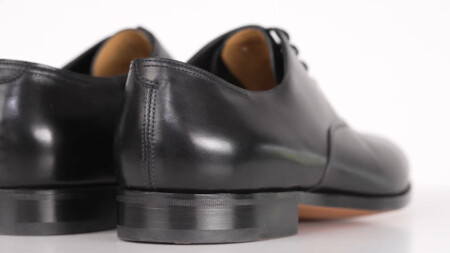
Sole & Heel
As it is quite a formal shoe, you are most likely to see an Oxford with a slim, elegant sole that leads to a strong heel. It’s common for the heel to be around 1 -1.5 inches in height, which gives a refined silhouette. Yes, it is possible for an Oxford to have a “flat” sole like a sneaker, but this drastically reduces the formality of the shoe, and isn’t recommended.
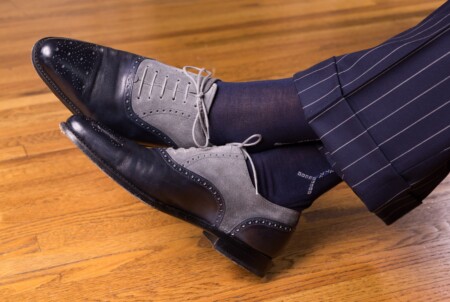
Decoration
The construction of an Oxford shoe allows it to be decorated in numerous ways, or, if preferred, simply left plain. Whether it’s with a simple cap toe, broguing, or a medallion, Oxford shoes can be found with all manner of unique designs.
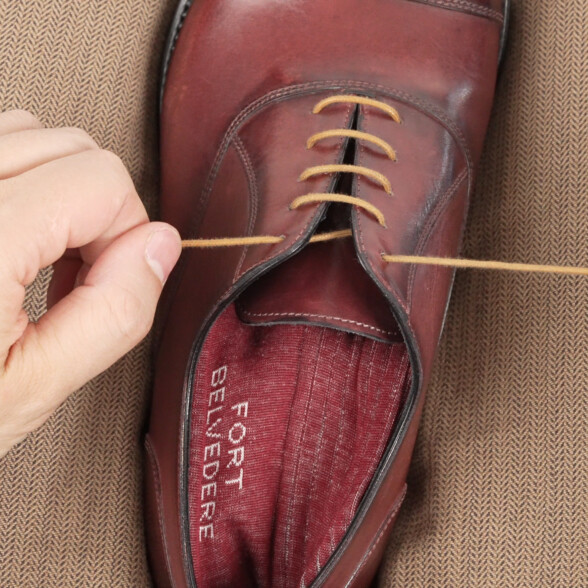
How to Lace Oxford Shoes?
Oxford shoes have a closed lacing system; this means the two halves that pull together when tightened by the laces are joined at the bottom, making a “V” shape. Getting your laces right on an Oxford shoe is imperative, and Raphael will teach you how in our ultimate guide
History of the Oxford Shoe
Surprisingly, the creation of the Oxford shoe came started with boots. Before shoes with a low ankle became popular, tall boots that we similar to modern-day riding boots were the norm. This is exactly the sort of style you see being worn by Beau Brummell, the “father” of modern-day menswear.
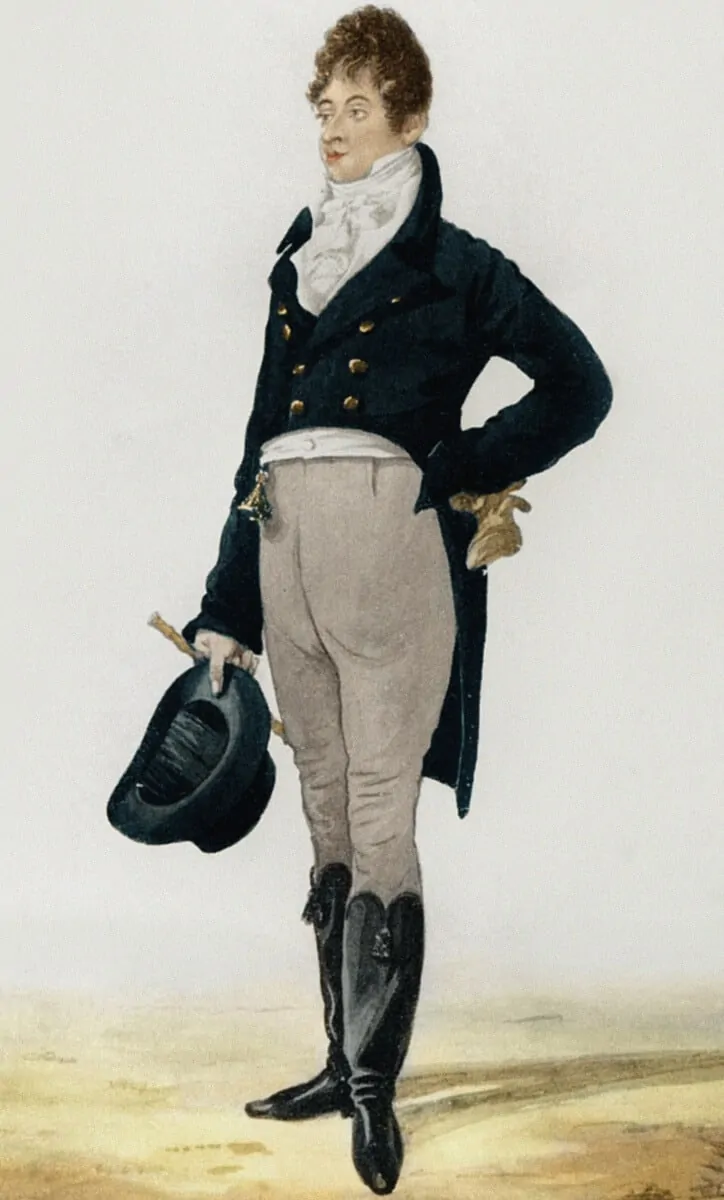
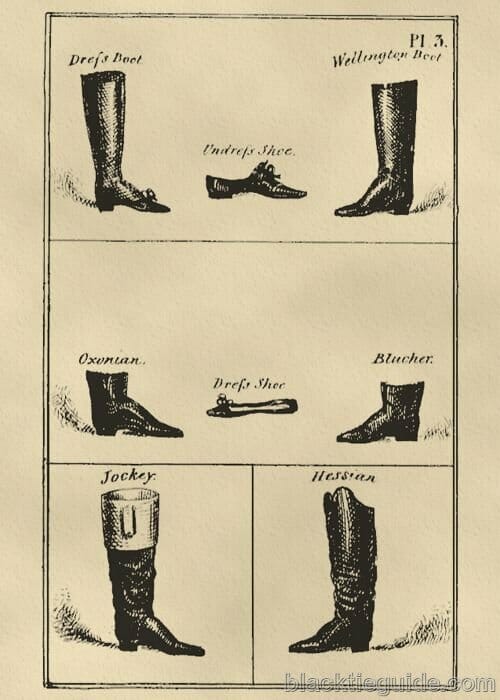
The tight-fitting breeches of the Regency era started being replaced with trousers that were longer and had a fuller cut. This made it unsightly to keep them tucked into a pair of tall boots all day, so men started wearing their trousers on the outside of their boots. Naturally, the boots needed to become shorter in order for the trousers to sit properly.
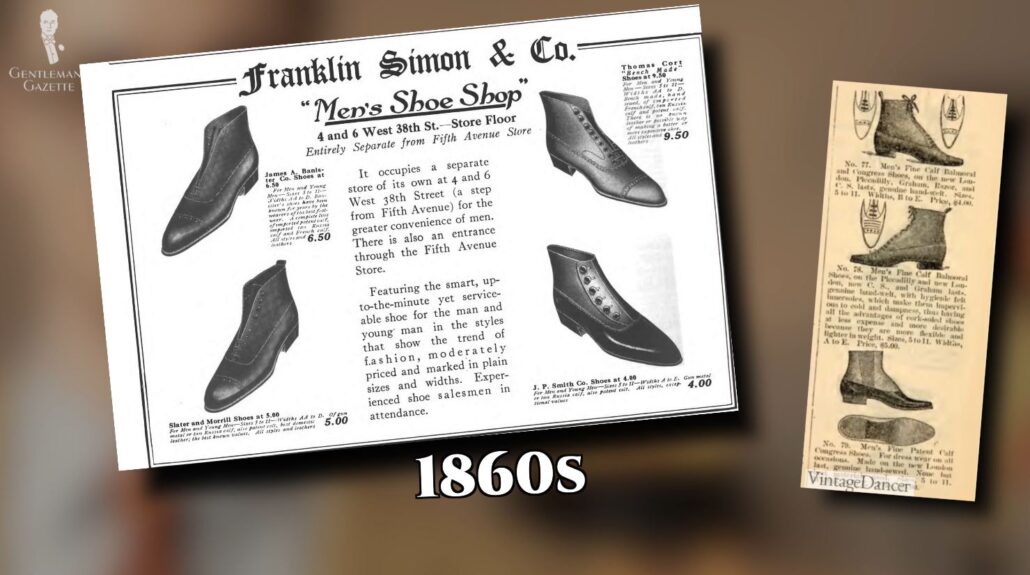
The resulting shorter boots were kept tight to the ankle, allowing them to sit neatly and elegantly under a longer pair of dress pants. A few varieties of shorter boots emerged around this time, in the early 1800s. One style was a pull-on ankle boot with elastic at the sides, created by Joseph Sparkes Hall and called a Chelsea boot.
The other two varieties required either a set of buttons or laces to fasten. The former were titled, somewhat unimaginatively, button boots, and the latter were called Balmorals after being a particular favorite at Balmoral Castle in Scotland.
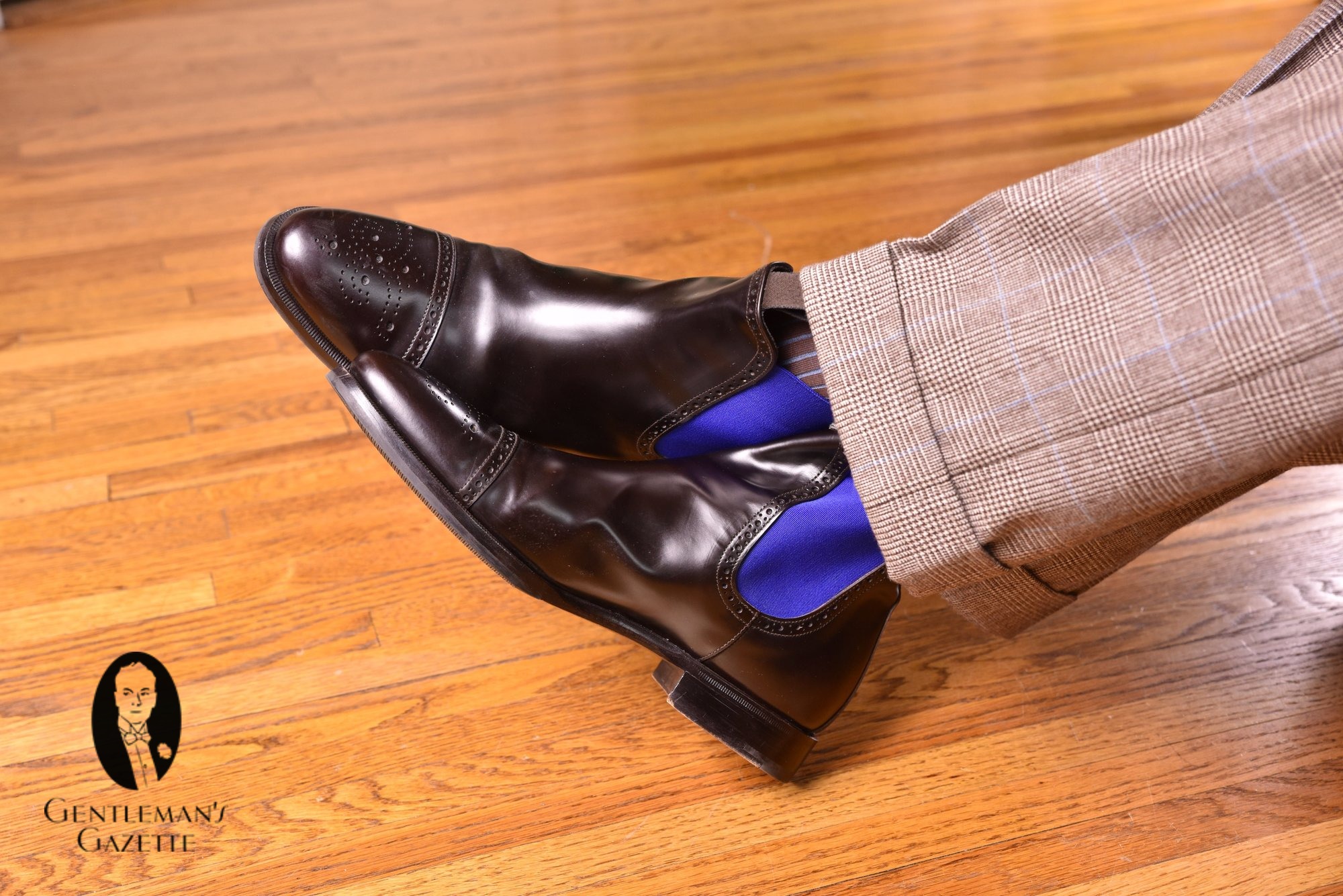
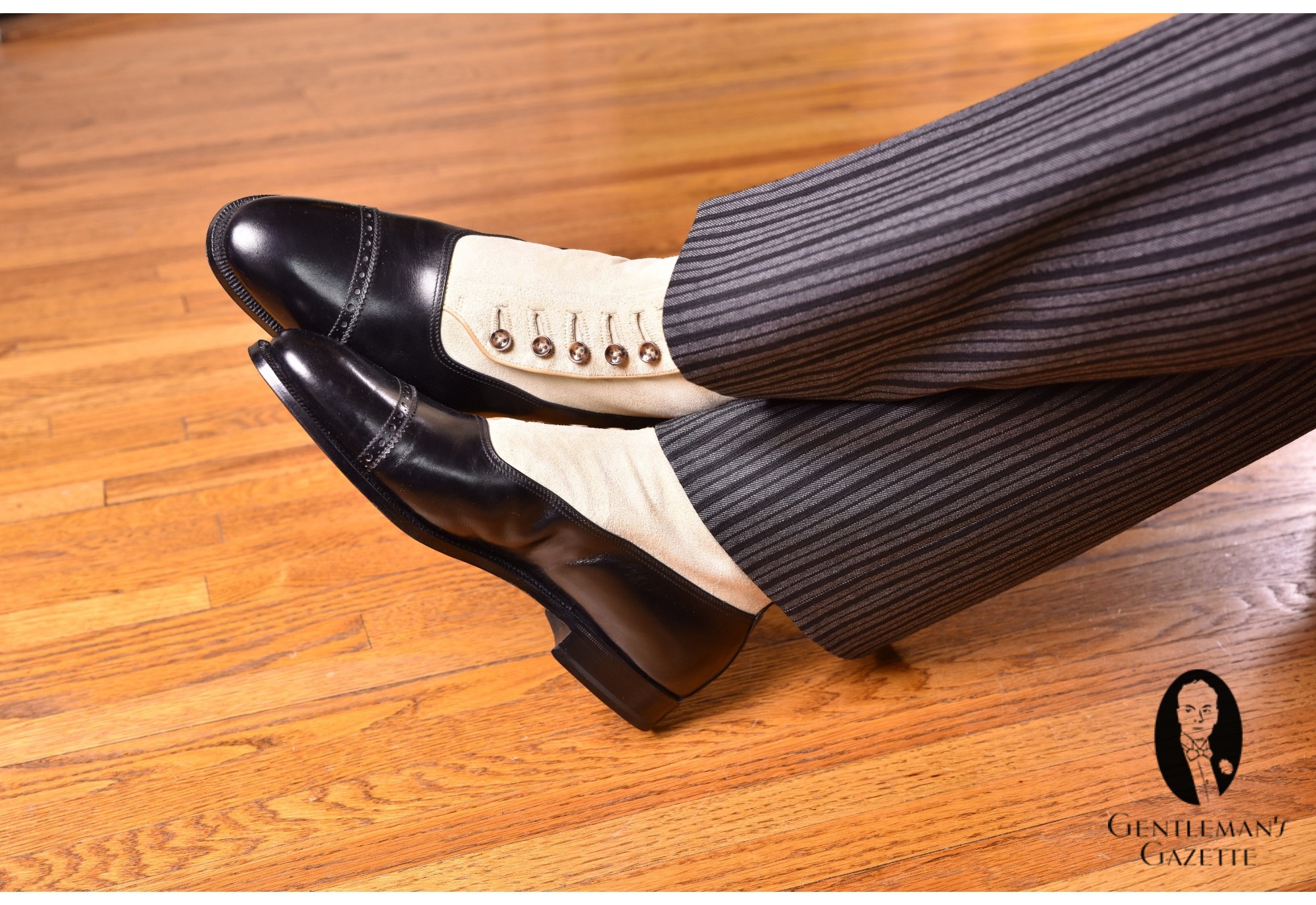
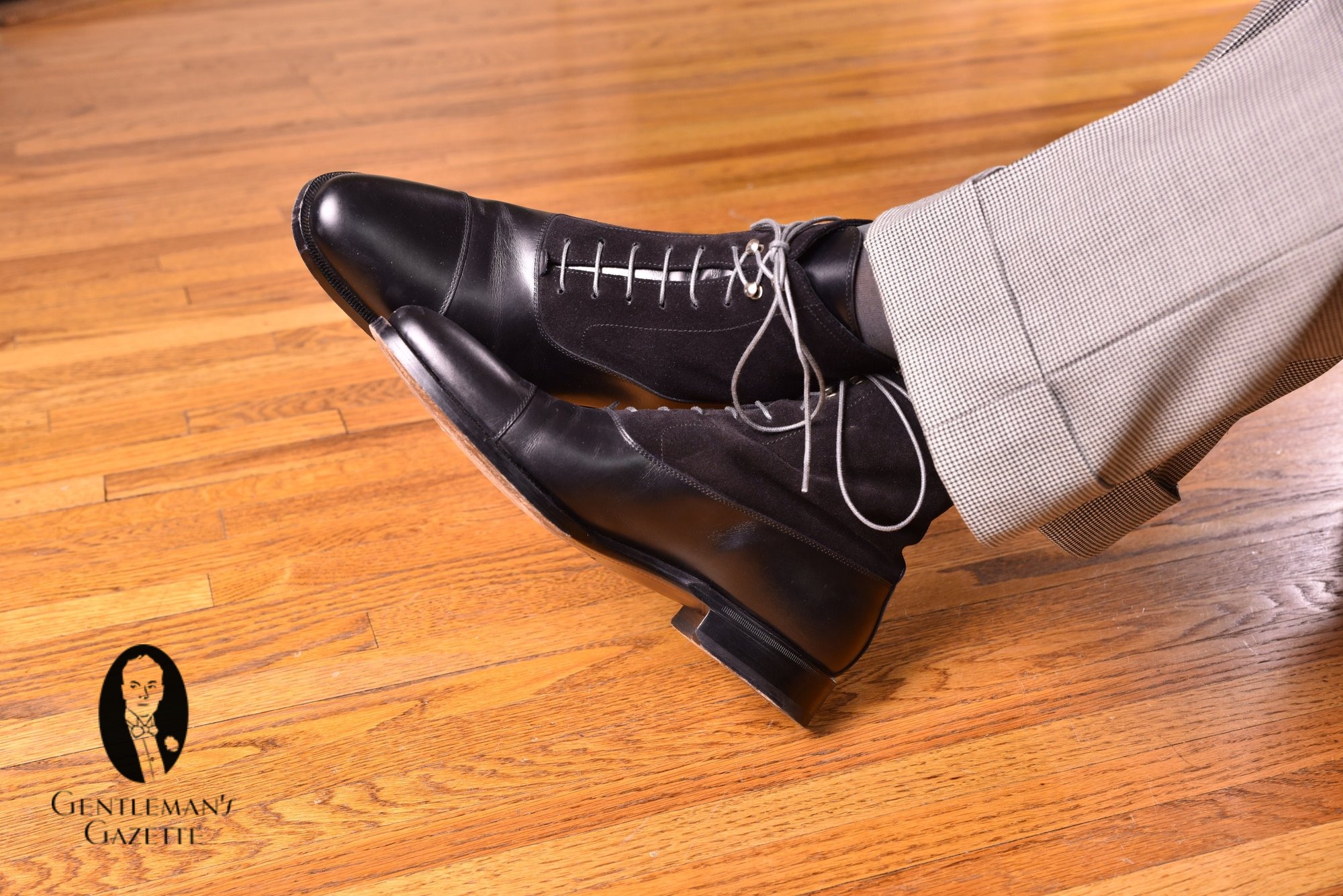
All three of these shorter varieties of boots are still made and sold today, with the Chelsea boot being the most easily accessible style. This is due to its remarkable ease of use – you simply need to insert your foot into the boot and pull it on, and you’re done. It’s because of the extra amount of effort required to wear both Balmoral and button boots that their popularity declined, making way for the Oxford shoe to make its debut.
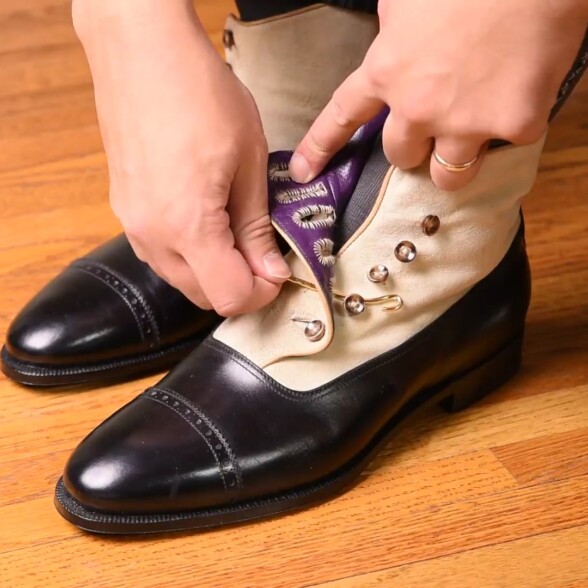
Extra Effort
As button boots require a separate tool known as a button hook to help fasten them, they became less widely used and moved into the realm of the connoisseur. This means they are usually hard to find ready to wear nowadays, with lovers of the style often going bespoke to get the right look.
Students Bring About Change
In a quest for a more comfortable shoe, university students were among the first to adopt a new style of footwear. They were a cross between the low, slipper-like evening pump popular for formal occasions and the laced Balmoral boot. By meeting halfway, with an opening higher than the pump but lower than the boot, this new shoe was both easier to wear than boots before it and more casual than slipping on an evening pump. With Oxford university being one of the most prestigious universities in England at the time, the shoes had found their name.
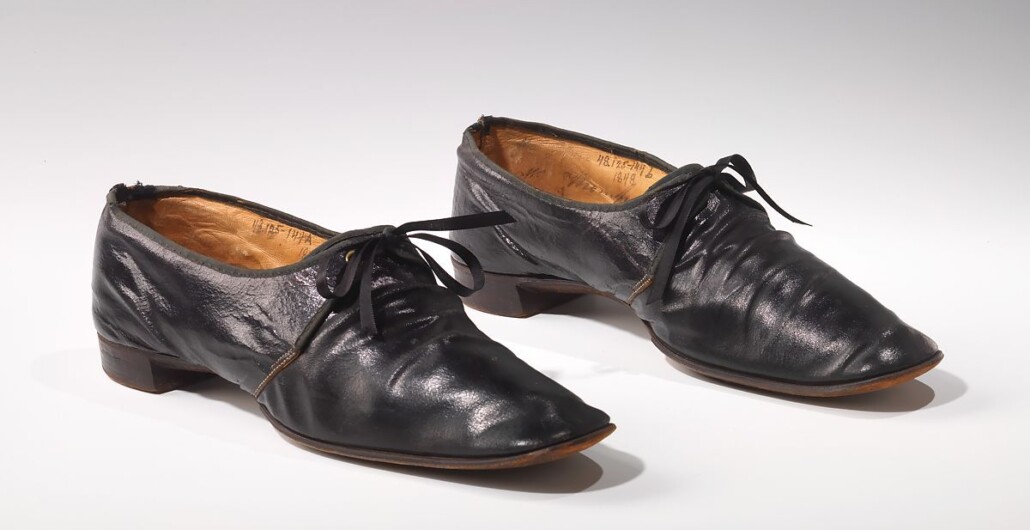
As the Oxonian shoe grew in popularity among students at this time, around the early half of the 1800s, most gentlemen surprisingly continued to wear boots, as it was more about formality than comfort. It’s funny to think this nowadays, but the Oxonian was actually considered to be a casual choice of footwear. But things soon changed when the young men graduated from university, taking the Oxonian shoes with them into their new careers.
“Dress pumps are the only shoes now worn. The Oxonian shoe … is the best for walking. It laces up the front with three or four holes. It is none other than high lows now called Oxford shoes.”
Joseph Sparkes Hall, from ‘the new monthly magazine’, 1846
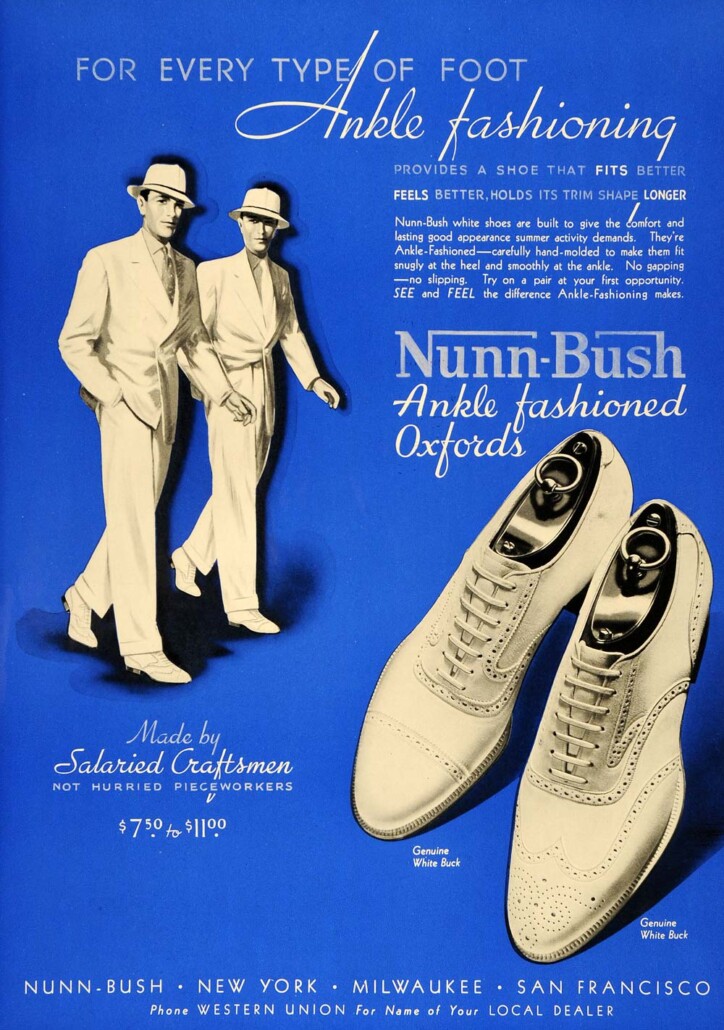
From there, it was a short step to being accepted as the proper choice of men’s footwear as boots were now being relegated to being worn for specialized activities such as horse riding. The style of the newly christened Oxford shoe underwent a small evolution to the style we know today. The rest, as they say, is history.
Different Types of Oxford Shoes
As we categorize an Oxford shoe by its closed lacing, you may be wondering if there’s any sort of variety that can be found when looking for an Oxford shoe. The short answer is simply: yes! As the Oxford has been such a staple style of shoe for decades, it’s lent itself to many different types of designs throughout the years.
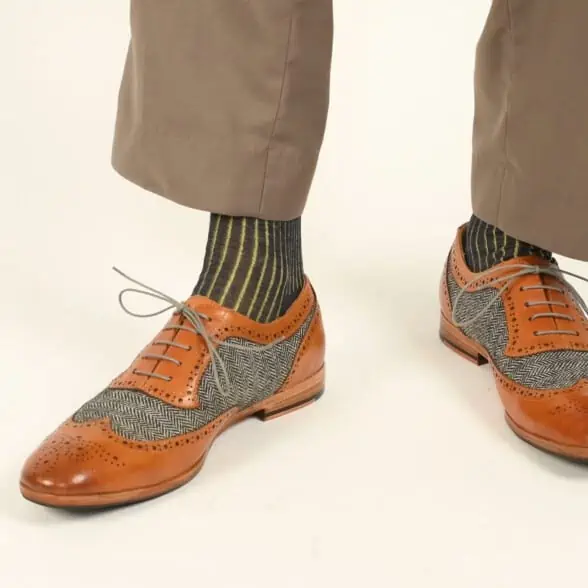
Quality Construction
Although technically, the construction of the shoe has no impact on the classification as an Oxford shoe, Goodyear welted or Blake-stitched shoes are most typically available. This is due to the fact that an Oxford is a classic choice of shoe and is often appreciated by those who want longevity in their footwear investments.
Plain Oxford
The plain Oxford basically consists of the quarter and the vamp. It features neither a leather cap over the toe box nor does it have broguing. This style is simple yet elegant, and in black patent leather, it is the number one choice for evening shoes for black tie and white tie.
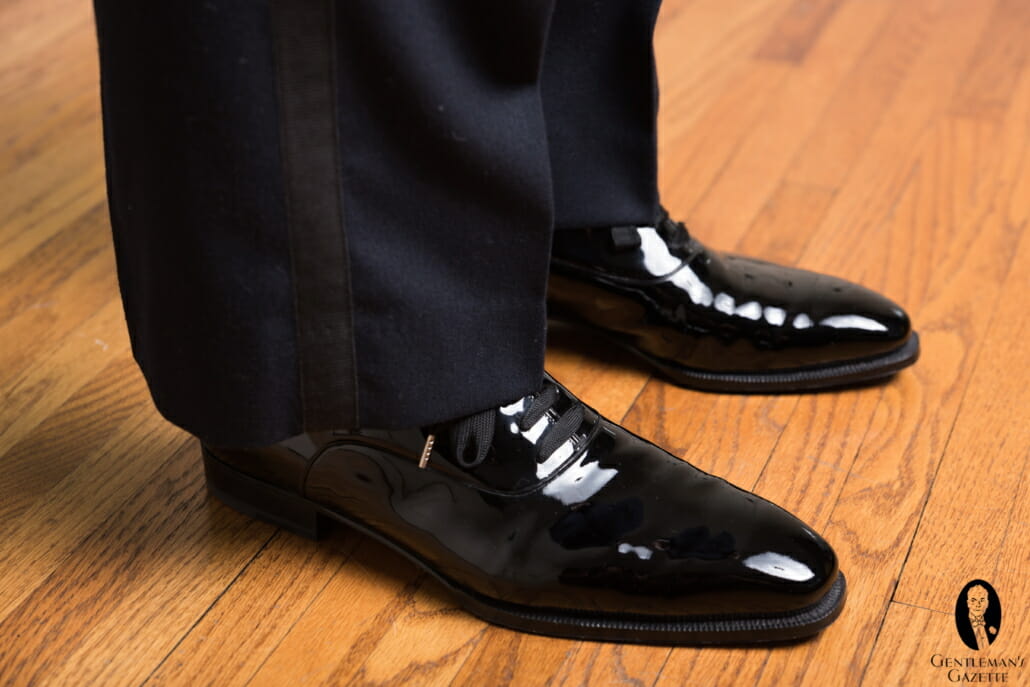
If you want to refine the look of your black patent oxfords for tuxedo or tailcoat events, you should take a look into evening shoelaces. Basically, they are much wider than regular shoelaces and they are made with fabric that will match your black bow tie.
Of course, this shoe can be made in brown, but you are more likely to ever see them in black. This is due to the fact that they are incredibly formal shoes, and can be difficult to pair when in lighter, more casual colors. That being said, this may provide you with an idea for something different if you’re looking for something unique in a bespoke shoe!
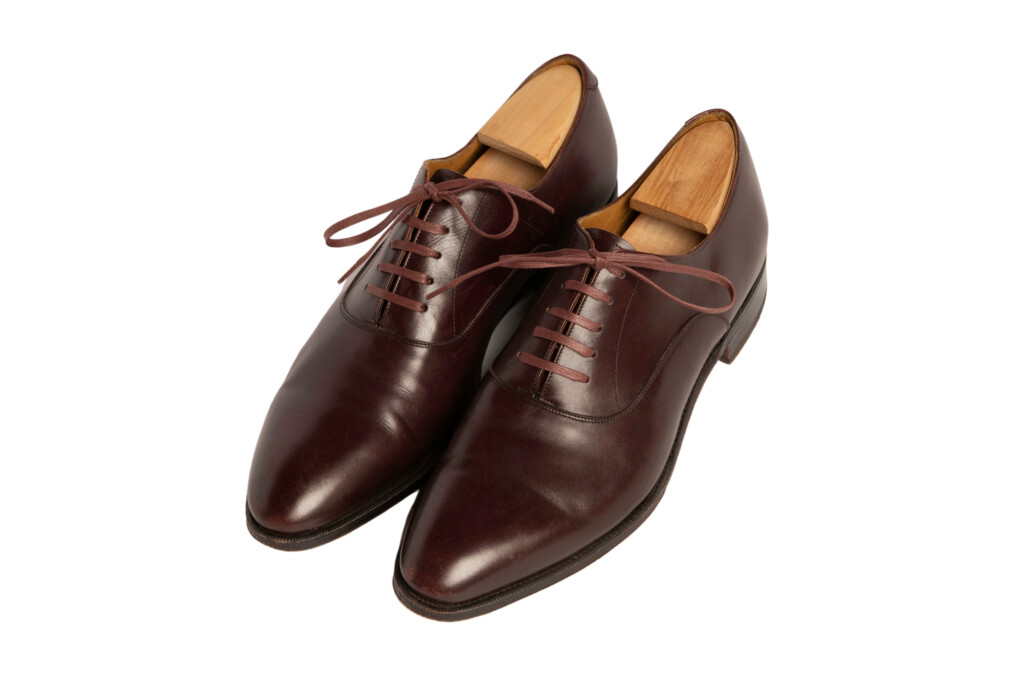
Wholecut Oxford
A wholecut Oxford has an upper that is cut from one single piece of leather. They differ from other types of shoes, which are usually made from multiple pieces of leather sewn together. Possessing the distinctive closed lacing system of an Oxford, along with the single-piece construction, the wholecut has an extremely clean and sleek look.
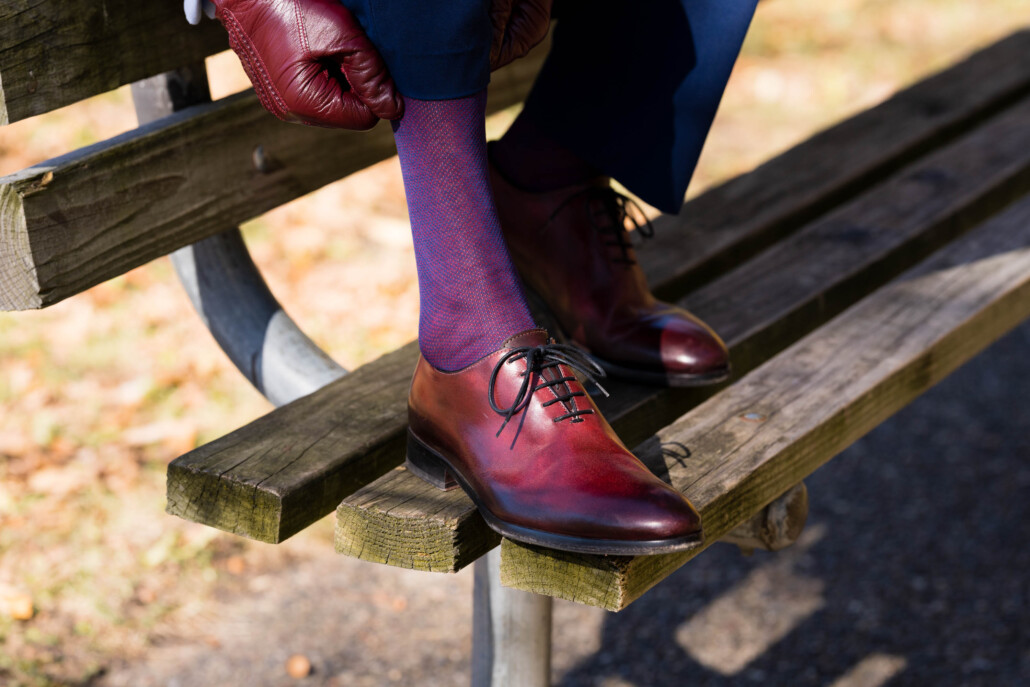
Because it generally has only a single seam at the heel, it also requires more leather to make a wholecut. This, coupled with the fact that it required a large amount of skill to cut and form the leather well, means wholecut Oxfords are usually priced higher than other types of Oxford. It’s rare to see a seamless wholecut, as they take even more time and skill to produce. However, the results are often beautiful and a testament to the craftsmanship of shoemaking.
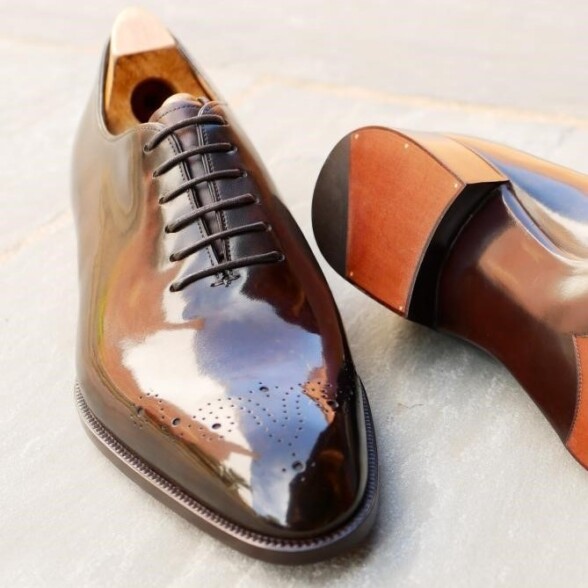
Elegant Details
It has become rather popular to feature a medallion or other broguing on the toe box as decoration, such as you can see in this pair from Gaziano & Girling. An all-black wholecut in patent leather or mirror-shined calf works as an evening shoe as long as it has no broguing.
Cap Toe Oxford
The cap toe Oxford, sometimes also referred to as captoe or cap-toe, is probably the most widespread Oxford shoe style in existence. The most popular color is undoubtedly black, and this style of Oxford is the most popular shoe for the majority of classic men’s shoe manufacturers. Of course, it is also available in tan, brown, cognac, oxblood, etc., but the black variety is the epitome of Oxford shoes.
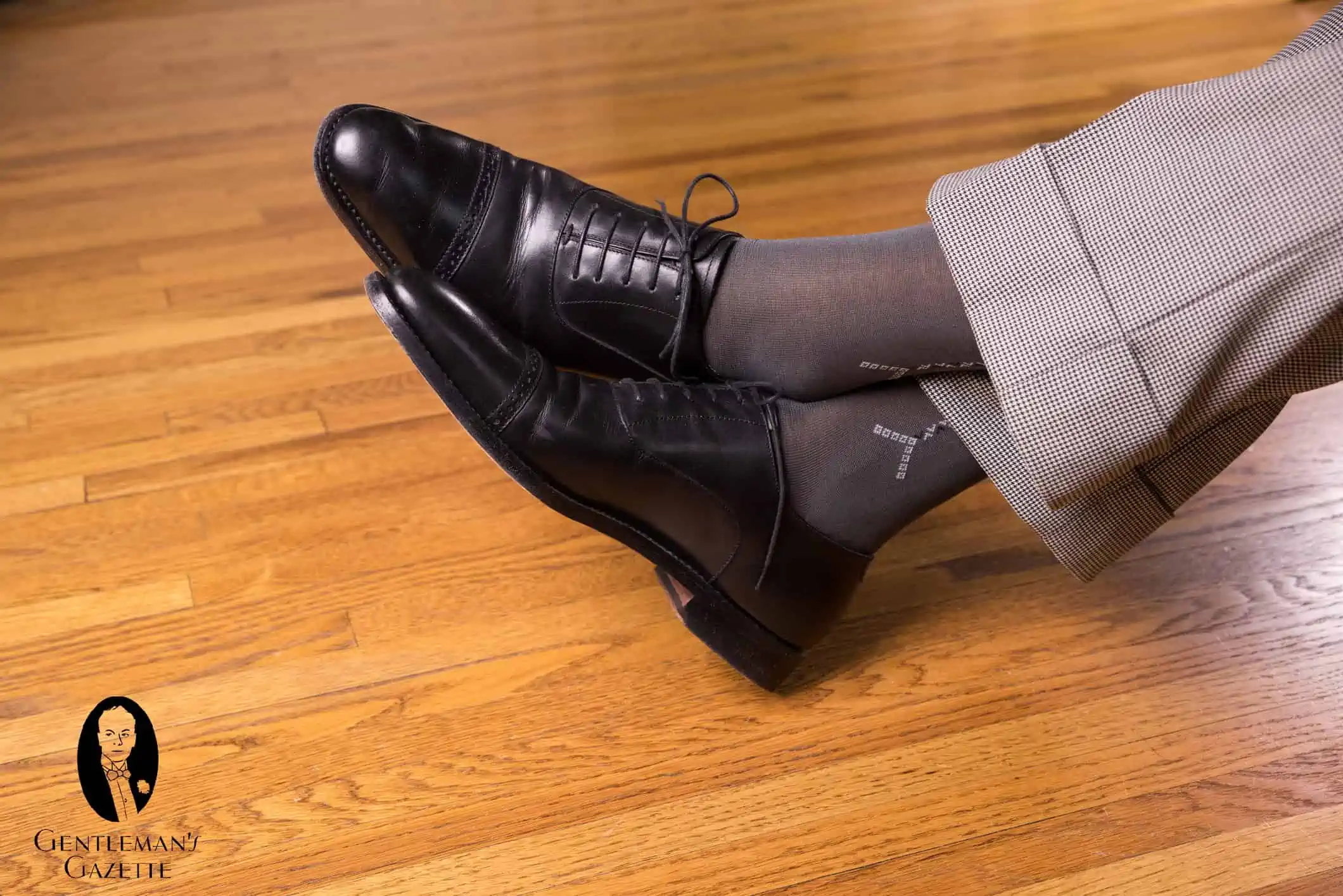
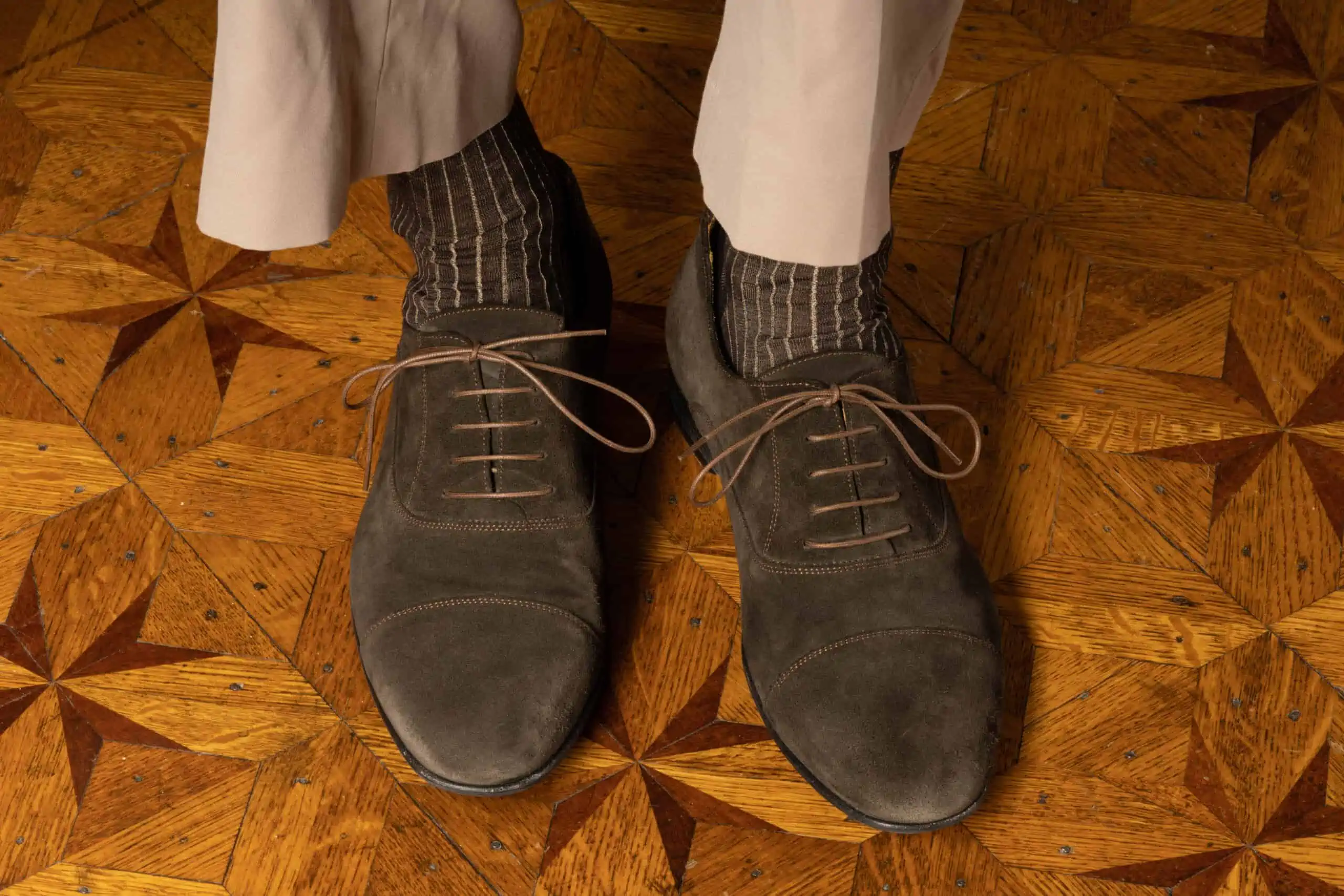
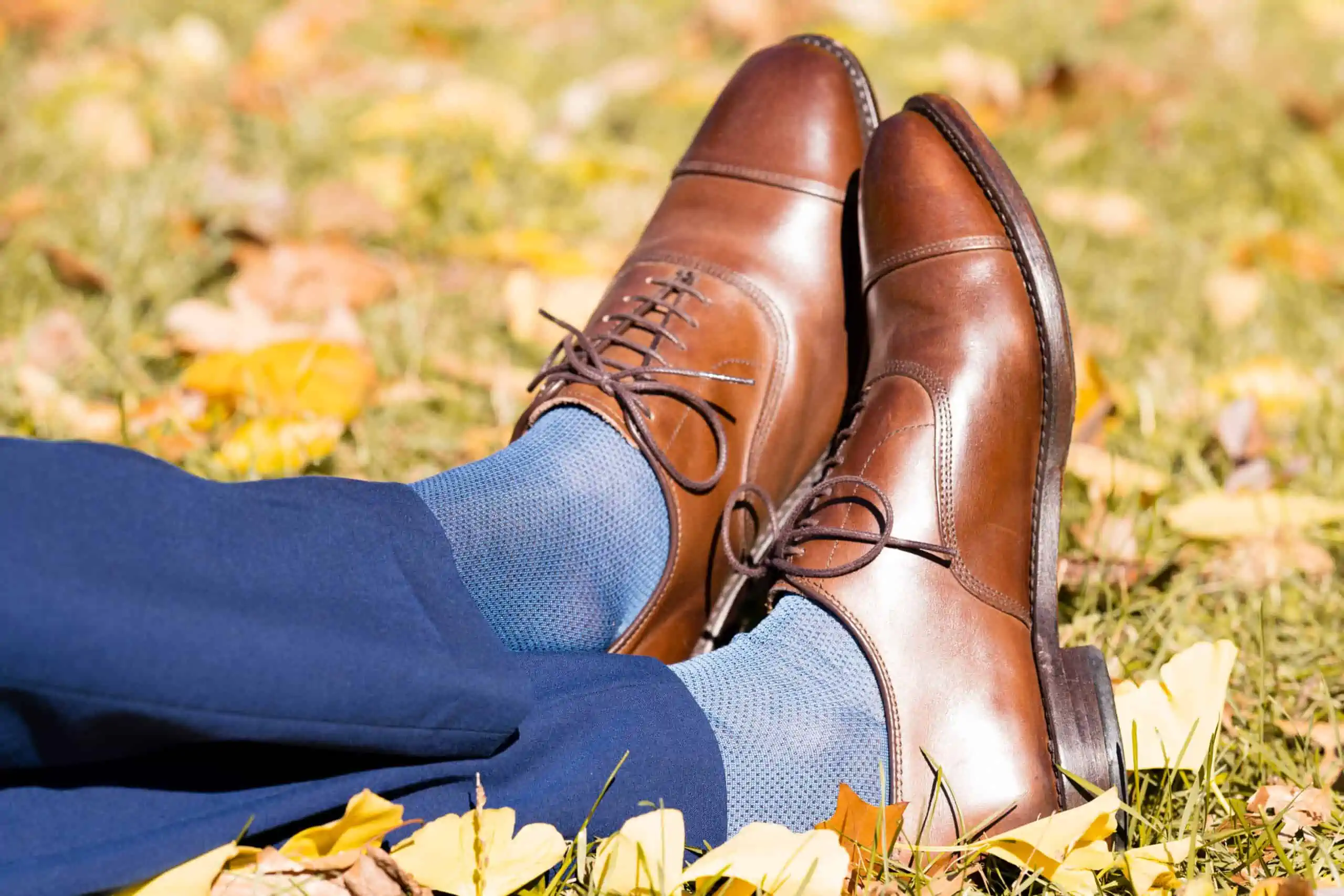
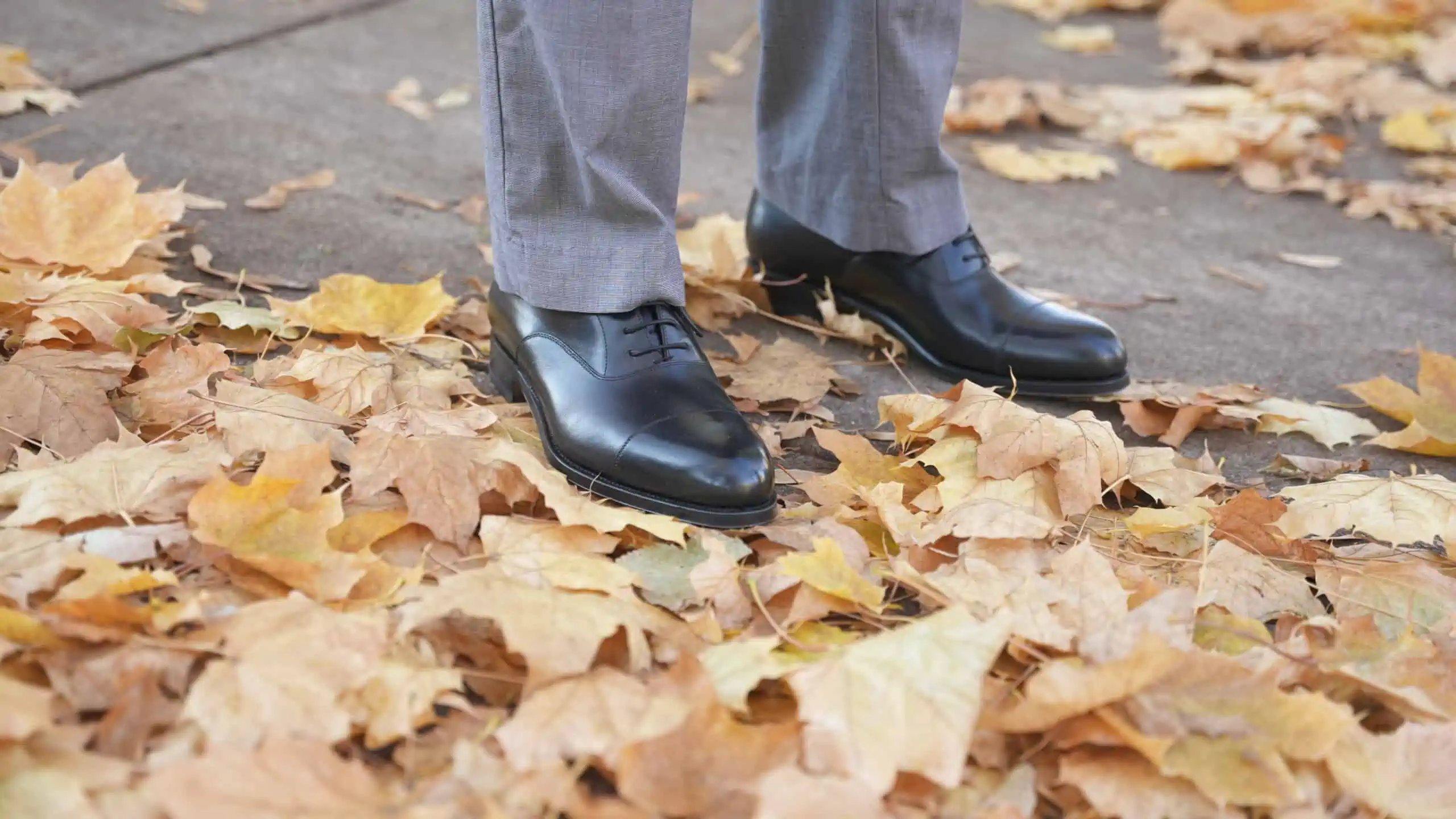
In addition to the vamp and quarters, an extra piece of leather – the so-called toe cap – is added across the toe box, and they can also feature a heel cap. In black, the cap toe Oxford is the classic business shoe worn by elegant men with their (business) suits across the globe.
If you don’t own a separate pair of patent leather or polished calf leather plain Oxfords, the black calf leather cap toes may serve double duty as a tuxedo shoe because it is considered by some to be acceptable in a hurry, although technically, it is not formal enough for traditional black tie. That being said, it is never correct to wear it with white tie.
Wingtip Oxford
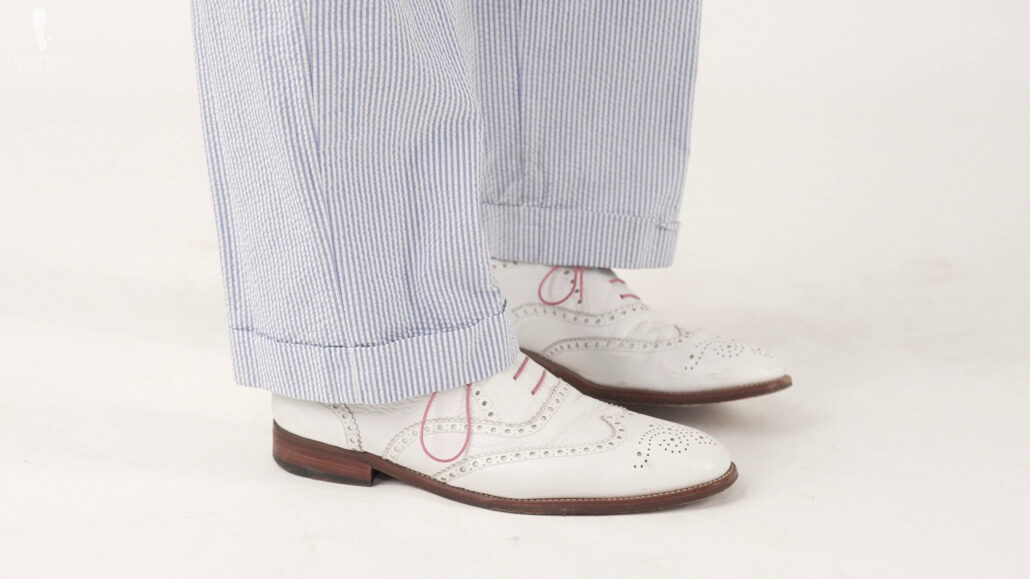
The Wingtip Oxford has a pointed toe cap with extensions called wingtips which extend along both sides of the shoe. Although technically an Oxford, it is generally referred to as a Brogue. When seen from above, the cap is shaped like a ‘W’ or an ‘M’, depending on the viewpoint. This style is considered a bit more casual than the Cap Toe. Learn all about Brogues here.
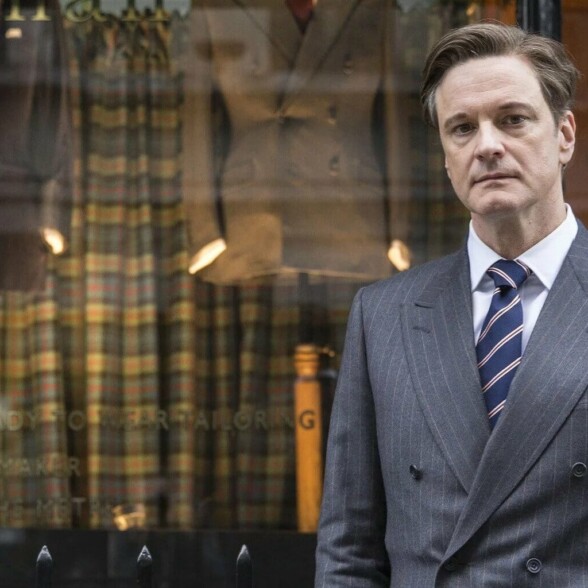
“Oxfords, not Brogues”?
In 2015, Colin Firth’s character in Kingsman: The Secret Service states, “Oxfords, not brogues.” This was intended as a fun way to create a unique code phrase for the fictional spy agency, but it is sartorially confusing. An Oxford shoe is categorized by its closed lacing system and broguing is perforated detailing. Therefore, Brogues aren’t always Oxfords and vice versa, but an Oxford can happily sport broguing and still be classed as an Oxford shoe.
Seamless Oxford
The seamless is very similar to the wholecut in the sense that it is made from one piece of leather as well. While the wholecut has a seam on the heel, the seamless does not have a seam, making it even more difficult to produce. It also requires even more leather than a whole cut, taking on average about twice as much leather as is needed for a regular cap toe Oxford.
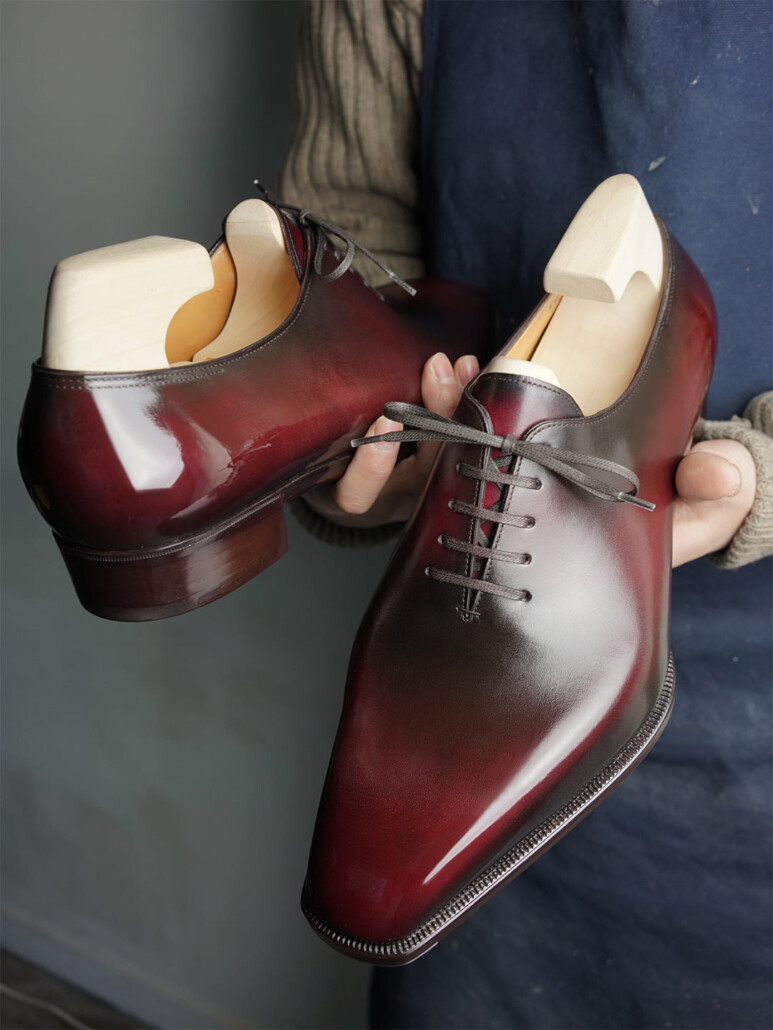
As such, it is usually only offered by bespoke shoemakers. Sometimes, the term wholecut is used synonymously with seamless simply because the term is more well known, although technically, this is incorrect.
Saddle Oxford
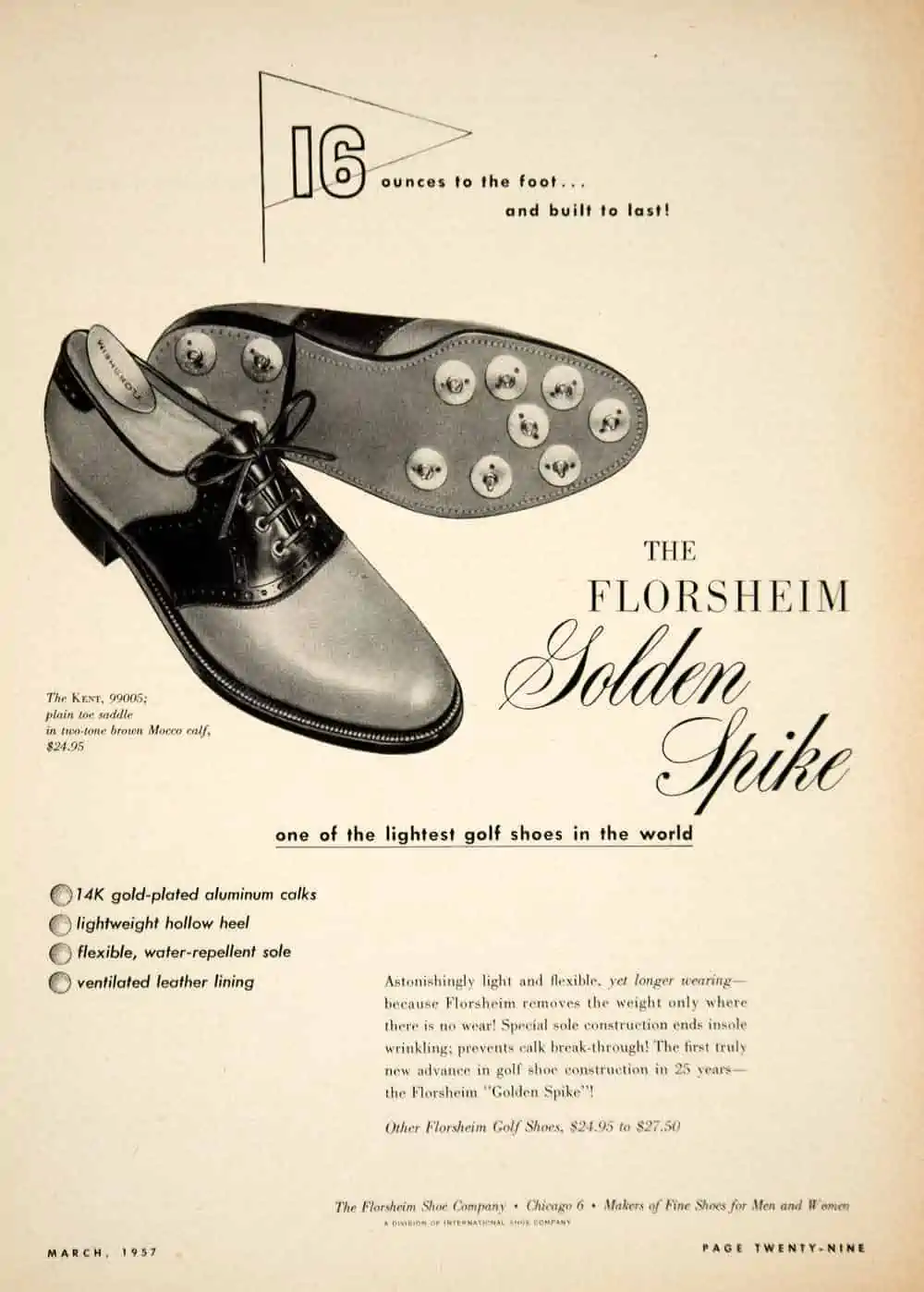
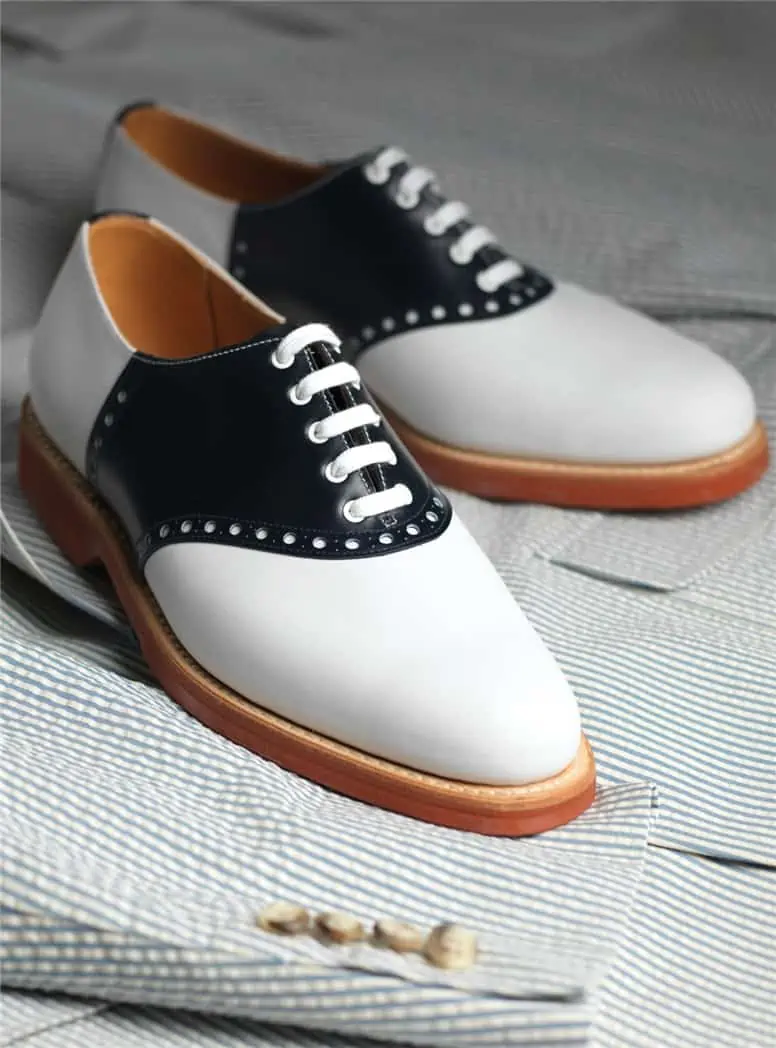
These oxfords lack any kind of toe caps and have an additional strip of leather that runs across the top of the middle of the shoes down to the sole (the width of the shoelace eyelets) in a contrasting color. They may or may not have heel caps in a contrasting color. Historically, it is an American style, but you can find them offered by companies all over the world.
Kiltie Oxford
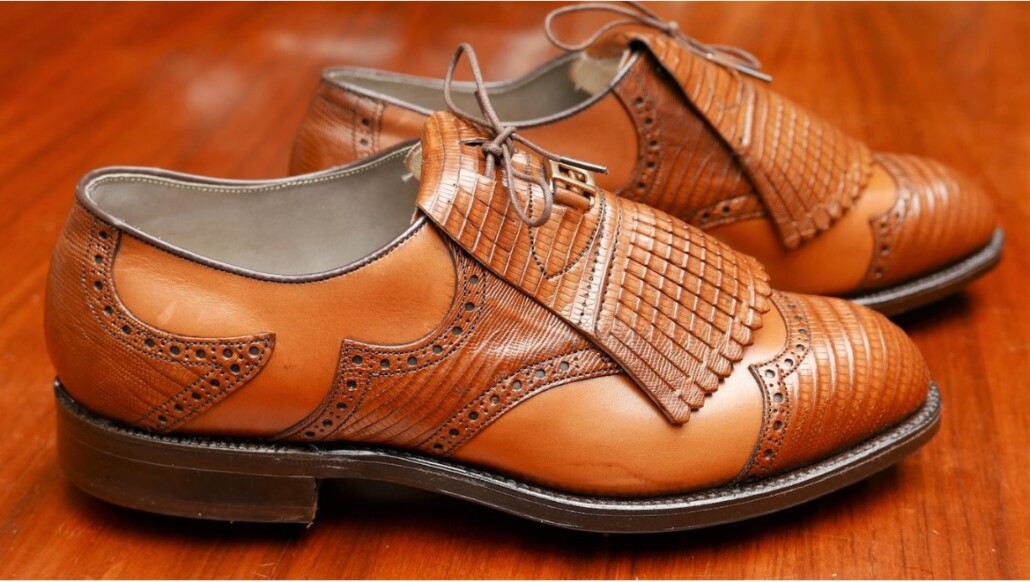
The Kiltie Oxford is distinguished with an additional fringed tongue hanging over the top that looks similar to a pleated kilt, hence the name. They used to be seen most in traditional sporting activities, with golf being a particular hot spot for Kiltie Oxfords. These shoes are no longer very common and are quite difficult to pull off well in the 21st Century.
How to Style Oxford Shoes
Strictly speaking, the Oxford is considered to be a formal shoe. However, nowadays they come in many colors and variations, as well as featuring unique detailing elements that can soften the formal feel of an Oxford.
Formal Oxford Shoe Styles
The first Oxford shoe every man should own is a black cap toe Oxford. It is the shoe that can be worn to the office, funerals, weddings, evening events, and maybe even black tie occasions. It’s hard to match this shoe for its versatility when it comes to classic menswear.
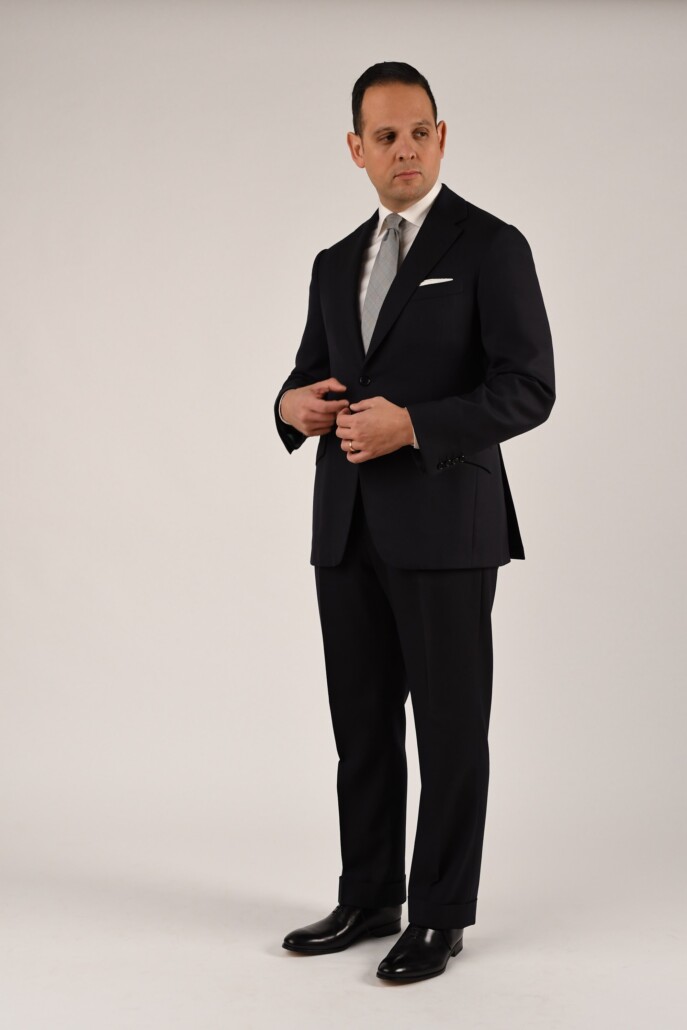
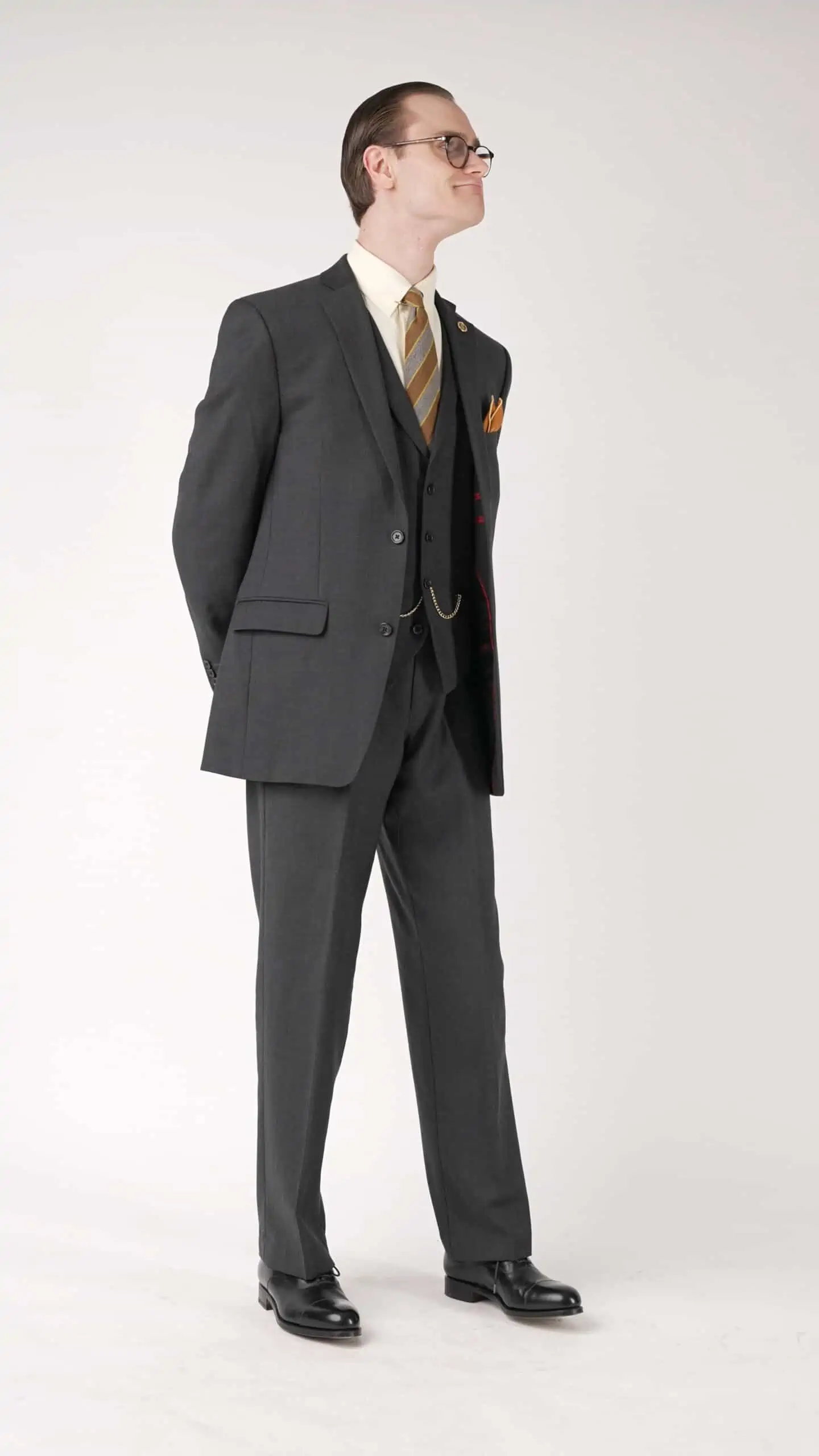
Wholecuts can look particularly handsome when a patina is acquired or applied to the shoe. These days the Cap Toe Oxford is often acceptable at Black Tie events and with dark evening suits or cocktail attire. It is not recommended to wear black with denim. For tweed, it is generally recommended to wear boots or derby shoes instead, while fresco, solaro, linen, or seersucker can be worn with cap toe Oxfords, although it is recommended not to wear black with these outfits. Instead, a spectator or a solid shade of brown is a much better choice.
Semi-Casual Oxford Shoe Styles
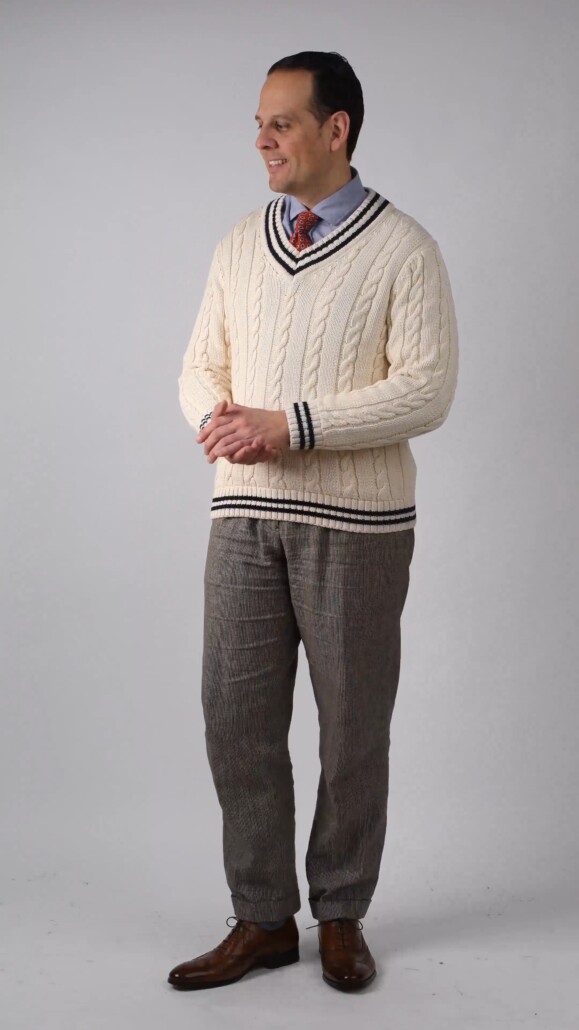
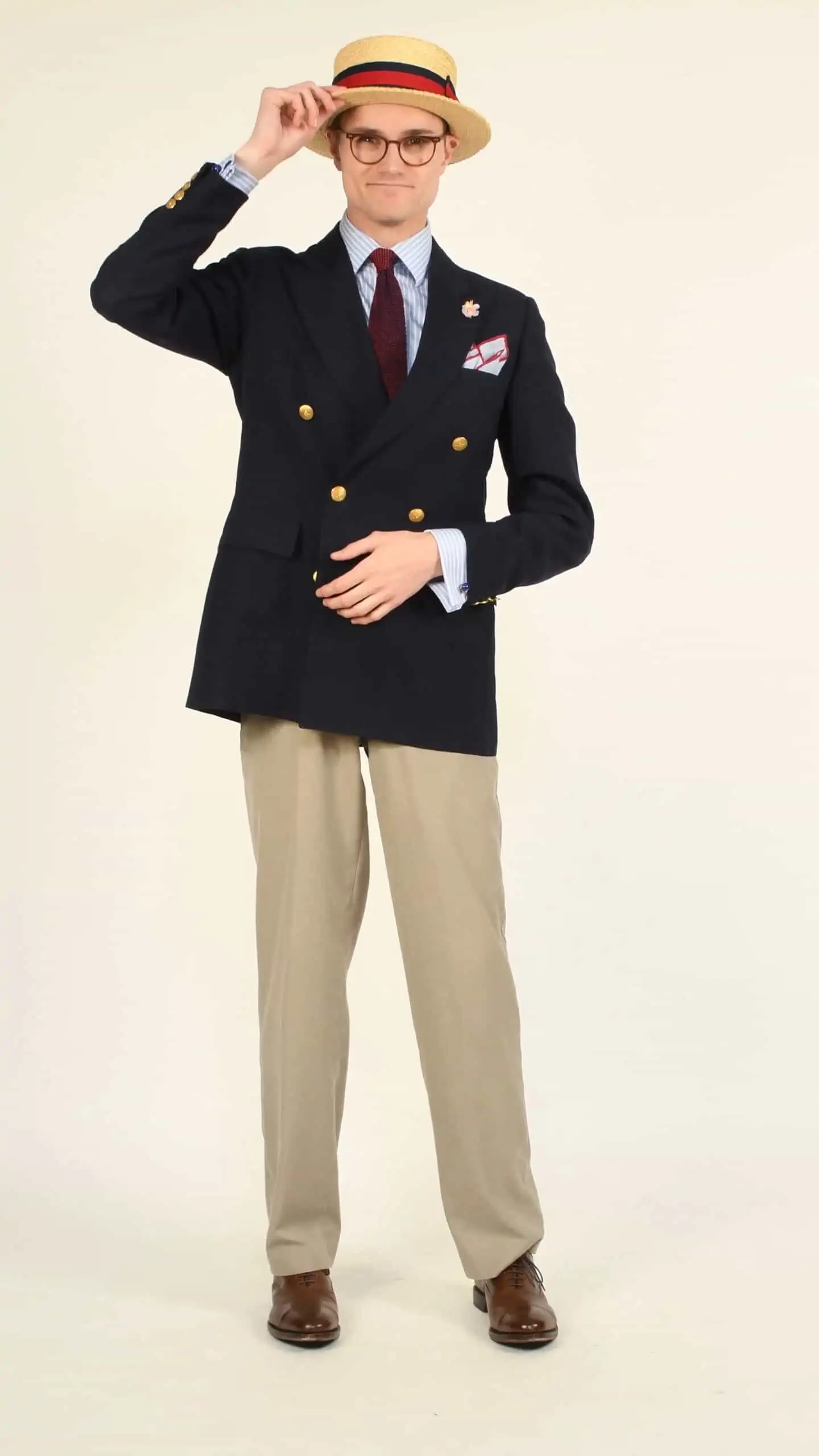
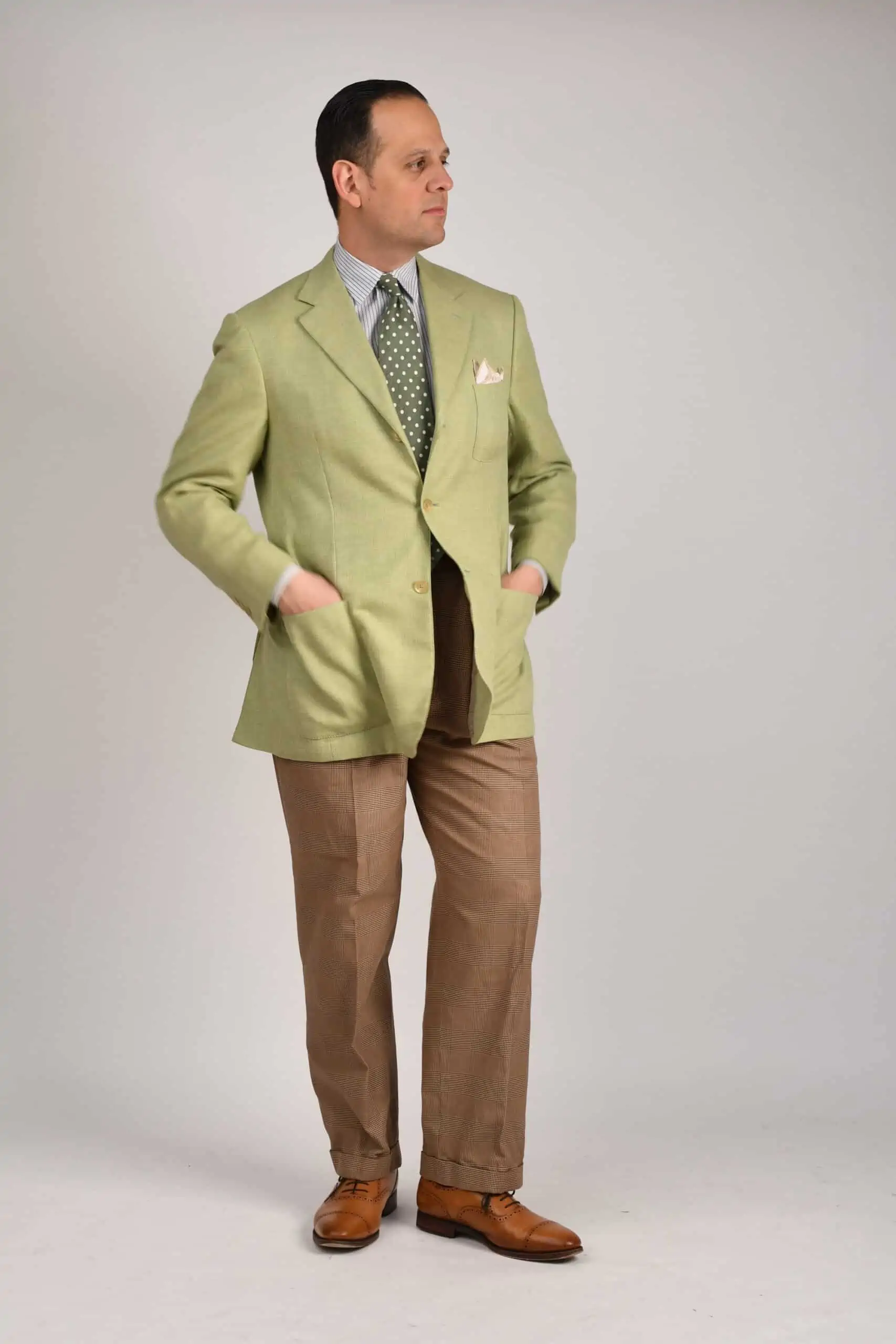
Wingtips or Brogues are considered to be more casual than the plain cap toe. In black, it can be worn to the office, but in dark brown, it becomes more versatile because you may now combine them with far more casual outfits and looks, including jeans. Especially in shades of brown, these are great for the office in non-white collar environments, and especially great with sportcoat or blazer ensembles.
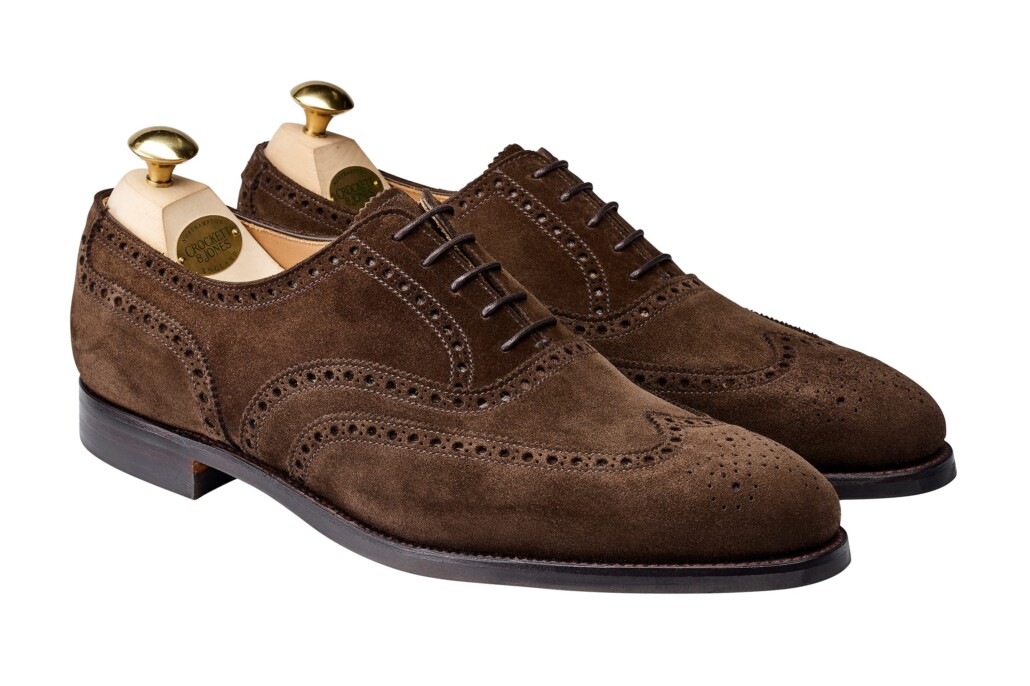
A dark brown brogue in suede is probably one of the 2nd or third shoes you should buy after you have invested in a black cap toe Oxford.
Casual Oxford Shoe Styles
Two-tone spectators and saddle shoes are probably the most casual of the Oxford shoe styles. Either style is particularly unusual and potentially even seen as flamboyant in the 21st Century. As such, we recommend focusing on getting the foundations of your shoe closet right before investing in something unique.
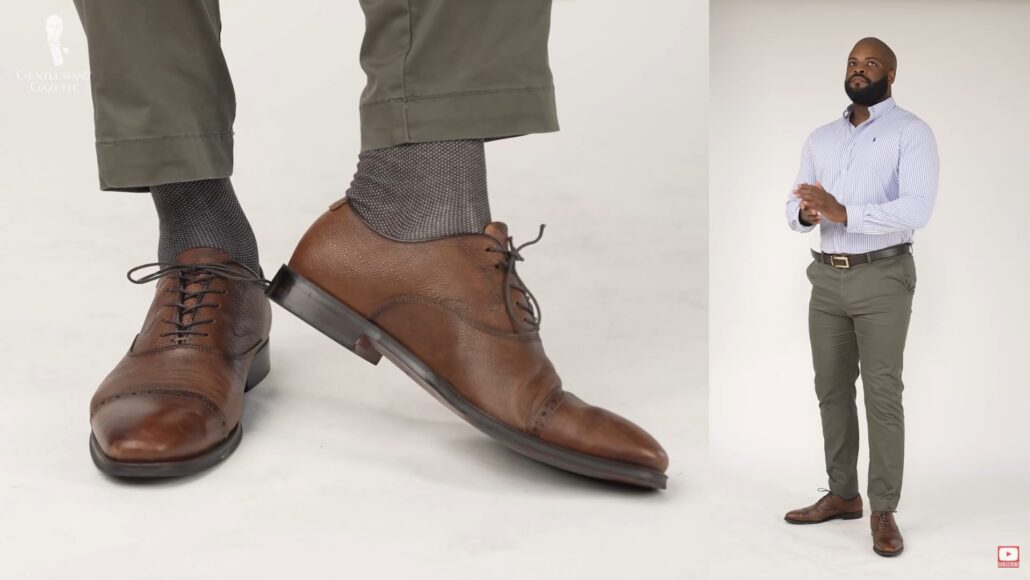
Instead, look for Oxford shoes with interesting colors and textures, such as a pair of semi-brogues with a patina. Or perhaps a pair of grey suede Oxford shoes, which will tone down the formality of the Oxford style. They can work really well with jeans, colored chinos or corduroy trousers, and other casual to semi-casual outfits.
Eveningwear Oxford Shoe Styles

Either plan or wholecut Oxfords in patent leather are some of the most elegant shoes you could own for an eveningwear ensemble. Whether you’re attending a white or black tie event, you’re bound to look timeless in a pair of plain or wholecut Oxford shoes.
Shoelaces: Upgrade Your Oxford Shoes on a Budget
If you already own Oxford shoes and you want a new look without buying a new shoe, the easiest way to do that is to change your shoelaces. With a pair of quality shoelaces in a complementary color, you’ll be able to change up the overall look of your Oxfords without having to buy a whole new pair of shoes.
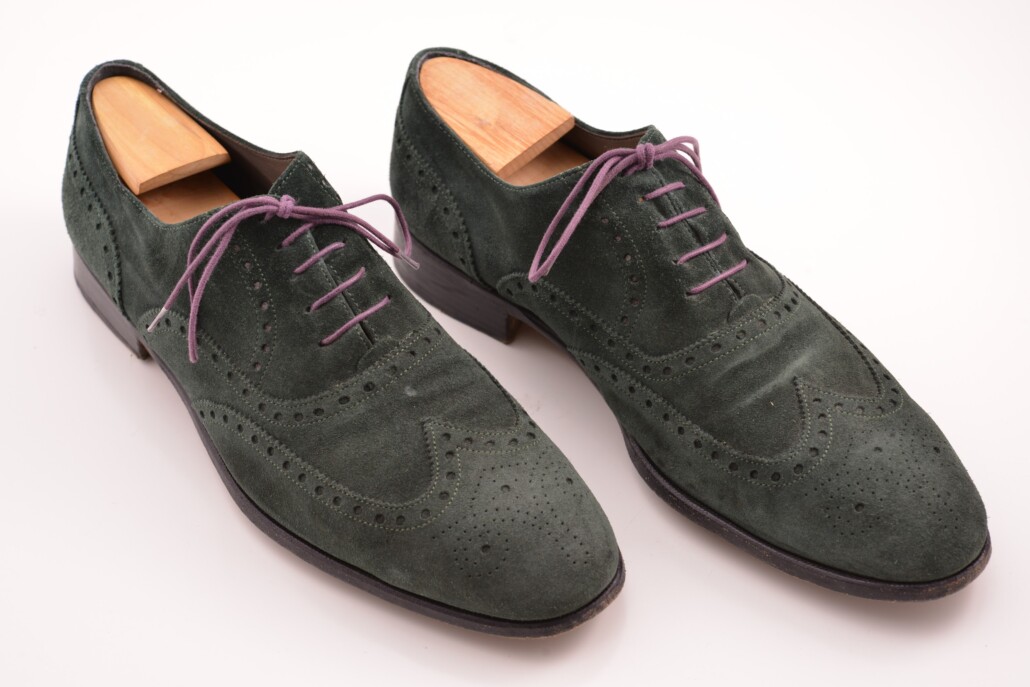
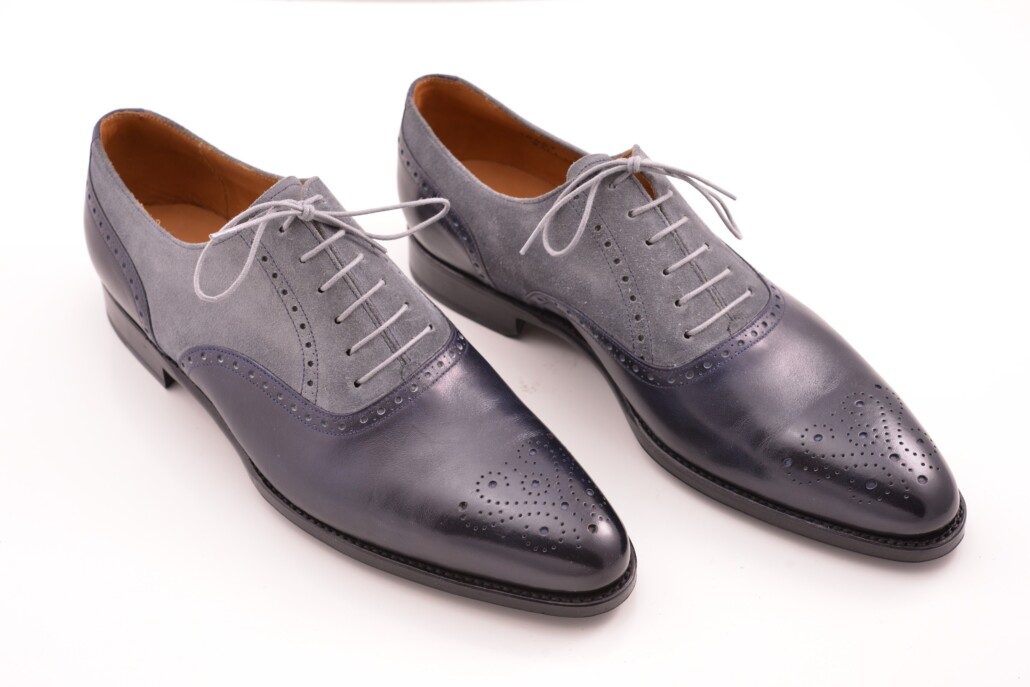
Whether you prefer your laces to be flat or round, it’s essential that they are thin, made from cotton, and waxed. This way, you’ll be able to lace your shoes, keep them tied securely, and look wonderfully elegant while enjoying your Oxfords. Dark grey or light grey shoe laces on a black oxford can look very sophisticated, with dark purple on brown looking just as splendid as blue with white Oxfords.
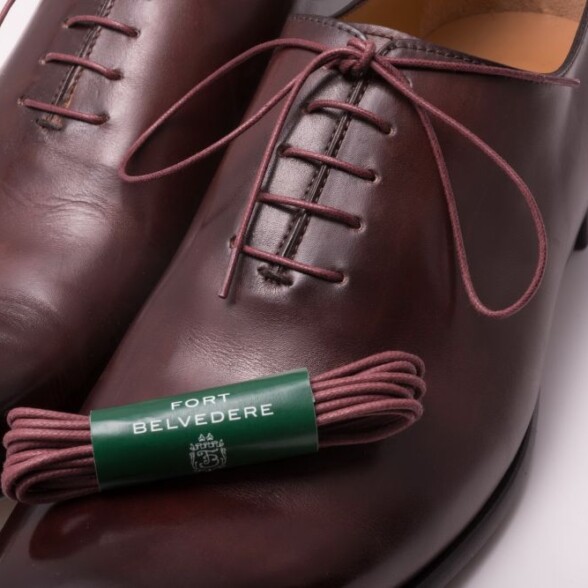
Thinking Ahead
An extra set of shoelaces can be a lifesaver. Luckily, you won’t have to replace your Fort Belvedere laces regularly, but if you feel a change of color is on the cards, or want to be prepared for any possibilities, then having a spare set in your EDC, bag, jacket, or closet is a great idea.
Where to Buy Oxford Shoes?
If you’re looking for a more general review of some of the most well-known brands making Oxford shoes, please take a look at our guides below. We’ve tailored these lists to match either a lower or higher-end budget, but both are useful to understand more about our thoughts on where to find good quality, stylish Oxford shoes.
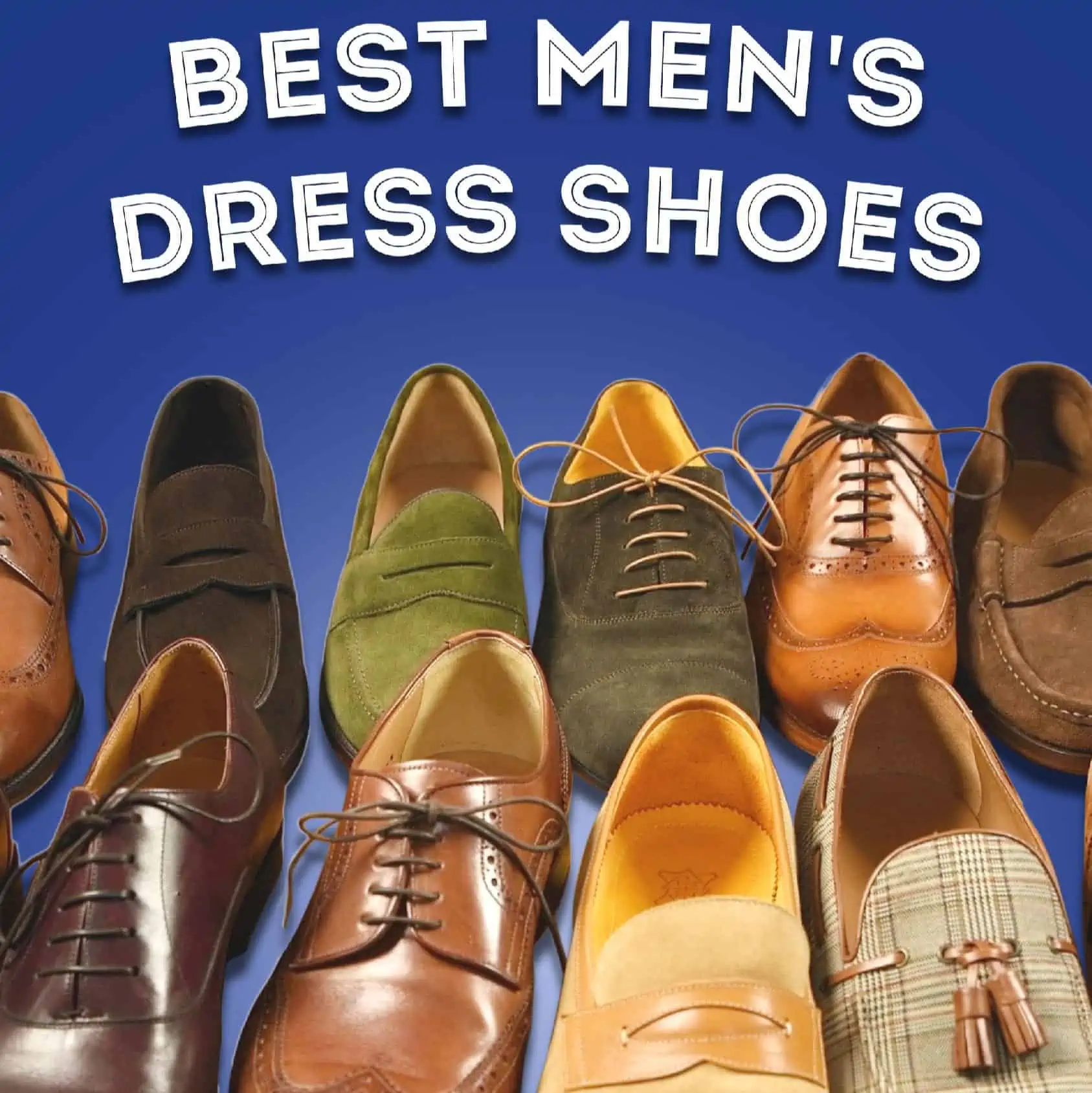
RTW Oxfords Under $300
If you’re looking for some great ready to wear suggestions for Oxford shoes at a budget of $300 or less, then check out our suggestions here.
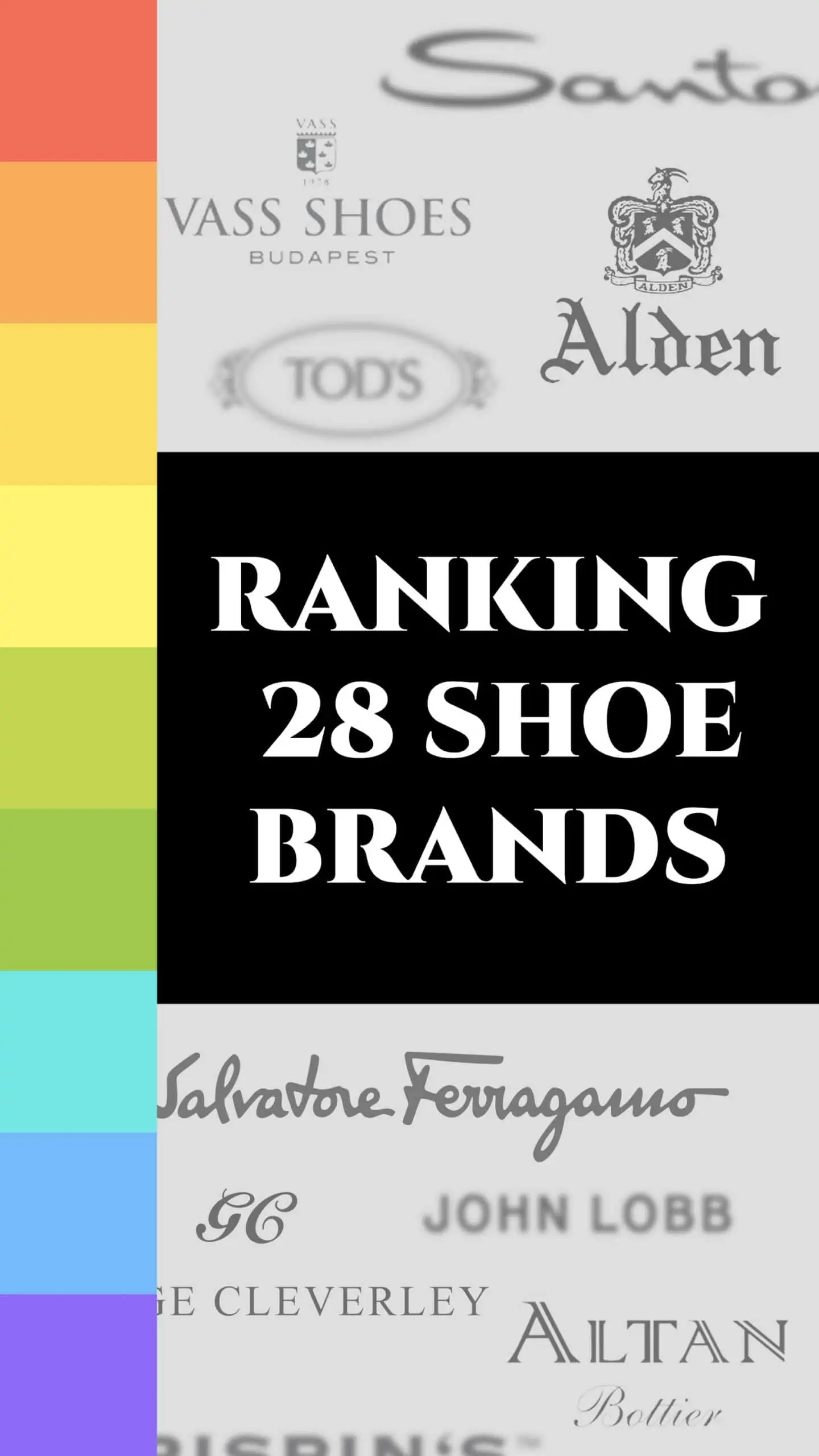
RTW Oxfords Over $500
Should you have a budget of $500 or more, these ready to wear shoe brands are bound to offer something you’ll like in an Oxford.
Budget-Friendly Oxford Shoe Brands
We consider budget Oxfords to be anything up to $300. When it comes to shoes, you really should be investing more than a cheap $30 pair from Walmart – you’ll end up replacing these far more than if you invested a little more in your Oxfords to begin with. In order to get a better cost per wear from your shoes, you’ll want to invest in a pair from brands such as the ones below.
| Oxford Shoe Brand | Our Thoughts |
|---|---|
| Ace Marks | Italian shoes blake rapid stitched on elegant lasts with nice patina in classic and unusual colors. $320 for a Wholecut, $295 for regular Oxfords = great value. They also have the occasional Kickstarter where you can get a pair of Oxfords for $200, which is an even better value. |
| Loake | Loake is based in Northampton, England, and produces private label shoes for many companies and offers decent quality for the price. Depending on which range you buy, your shoes may be made in England or Asia. The shoes made in Asia typically reflect at a lower price, which is great for shopping on a budget |
| Meermin | Run by a member of the Albaladejo family, who also runs the famous Carmina shoes from Mallorca, Spain. In order to save costs, their shoes are made in China, and so the workmanship is not quite on par with Spain, but the price is considerably lower, making it a good choice for a starter pair of Oxfords. |
| Shoepassion | Based in Berlin, Germany, Shoepassion offers a great selection of classic and contemporary Oxfords made in Spain. With good quality and good prices, we recommend them to anybody who is looking for more unusual styles like saddle shoes or spectators at a reasonable price. |
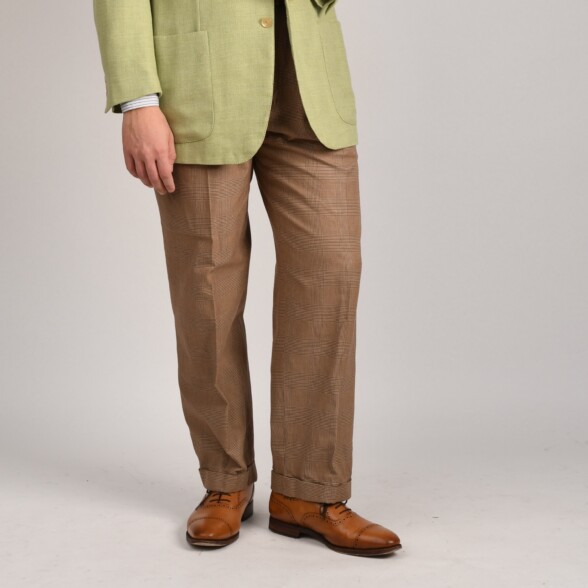
Viva la Vintage!
If your budget can’t stretch to a brand new pair of Oxfords, then you’ll be surprised at what the vintage market can offer you. High-end names are often available pre-loved for excellent prices, and even with the price of a re-sole and refresher, they may still cost less overall than a brand-new pair. Raphael managed to win this pair of pre-loved Oxfords for just $56 at auction on eBay.
Mid-Range Oxford Shoe Brands
For our choices in mid-range Oxford shoes, we’ll be looking at prices between $300 and $700. Perhaps you already have a couple of pairs of budget Oxford shoes and are looking to upgrade to the next level, or maybe you’re looking to treat yourself to something a little more special. At this price point, you should see an increase in the quality of Oxford shoes on offer here, with a range of different materials and designs at your disposal.
| Oxford Shoe Brand | Our Thoughts |
|---|---|
| Alden | With a passion for the finest Cordovan leather, Alden shoes are an American-style staple. Conservative, timeless styles of Oxford shoes are epitomized in quality leather choices. |
| Allen Edmonds | Producing classic American-style shoes, they have many specials and deals going on, often being able to offer a very attractive price. If you’re looking for the quintessential American Oxford, then Allen Edmonds is the brand for you. |
| Carmina | Based in Spain, Carmina produces excellent Oxford shoes. They specialize in Cordovan, and although these usually push the upper limit of the mid-priced range, they are very beautiful shoes, indeed. |
| Crockett & Jones | From England, we recommend Crockett & Jones for the classic Gentleman who wants proper English shoes with history in a great selection and variety of styles. |
High-End Oxford Shoe Brands
When the sky’s the limit, these are some truly indulgent Oxford shoe brands for you. Every shoe in this category comes in at over $700, but you’re bound to see the results of exquisite craftsmanship, superlative materials, and outstanding design.
| Oxford Shoe Brand | Our Thoughts |
|---|---|
| Aubercy | French shoemakers such as Aubercy are known for their love of dramatic, elegant lines. A thoroughly “European” style, Aubercy’s Oxfords are available as RTW, MTO, and Bespoke. |
| Edward Green | For many who enjoy Oxford shoes, Edward Green is said to make the most exacting pair when it comes to RTW standards. With a rich history of creating excellent footwear, Edward Green is a brand to look for when it comes to Oxford shoes. |
| Gaziano & Girling | Based on Savile Row in England, Gaziano & Girling offers great shoes in the variety of RTW, MTO, or bespoke. The lasts are often stylized and the epitome of elegance. |
| Stefano Bemer | Italians are known for their love of style and quality when it comes to menswear. Stefano Bemer is no different, with exquisite Oxford shoes available at levels of both bespoke and RTW |
Bespoke Oxford Shoes
Naturally, there are many custom shoemakers all over the world who would be able to create a pair of Oxfords to your own bespoke specifications. This is a process Raphael is exploring with his own bespoke shoemaker, where he is having a custom pair of Oxfords made by Amara Hark Weber. You, too, can see the progress of this journey, starting with the process of taking Raphael’s measurements.
Oxford Shoes FAQs
What are Oxford shoes?
Oxford shoes are a type of formal shoe, featuring a closed lacing system and low ankle that allows for full range of movement.
Are Oxford shoes formal?
As far as footwear goes, Oxford shoes can be the most formal style. Because the laces close neatly in the front of the shoe, they do not look as casual as a pair of open-laced shoes like a Derby. Of course, the formality of an Oxford shoe will depend on a few other factors, such as the color choice, as well as any additional decoration.
What is the difference between Oxford and Derby shoes?
The two halves of leather that come together when the laces are tightened are considered either “open” or “closed”. Because these two halves are stitched under the vamp on an Oxford shoe, they are considered a closed lacing system, whereas on a Derby shoe these two halves are attached on the outside of the vamp, thus meaning they are an open lacing system.
Can I wear Oxford shoes with jeans?
It is possible to wear a pair of Oxford shoes with jeans, but you have to be careful. Stick to less formal styles of Oxford shoes, where materials such as suede are used, and when additional decoration such as broguing is added. This way, you’ll match the more casual nature of your denim.
What does “Oxfords not brogues” mean?
The phrase “Oxfords not Brogues” was made famous with the 2015 film ‘Kingsman: The Secret Service’. In the film, secret agent Harry Hart, portrayed by Colin Firth, gives this code phrase as a way of identifying himself as a Kingsman agent, as their base of operations is hidden in a tailor’s shop on Savile Row. Interestingly, he also states that Oxfords are “any formal shoe with open lacing”, which is inaccurate.
Why are they called Oxford shoes?
Oxford shoes were originally called ‘Oxonian’ shoes, as they were favored by university students who didn’t want to wear the formal boots prevalent in the 1800s. Over time, the name changed to ‘Oxford’ shoes as an even more direct link back to the prestigious university in England where the style took off.
Are Oxford shoes comfortable?
Just the same as any style of footwear, a well-made pair of Oxfords that fit you well can be just as comfortable as athletic shoes. The key is to make sure you buy a pair of Oxfords that fit you well, and are made with high-quality materials that allow your foot to breathe throughout the day.
Are Oxford shoes appropriate for business casual?
When selecting a pair of Oxfords for the business casual office, ensure you hit the right level of formality. For example, a pair of wingtip Oxfords is a wonderful choice for a business casual wardrobe. You could also try Oxfords in shades of brown and tan as a way to make sure you’re appropriately attired for the business casual dress code.
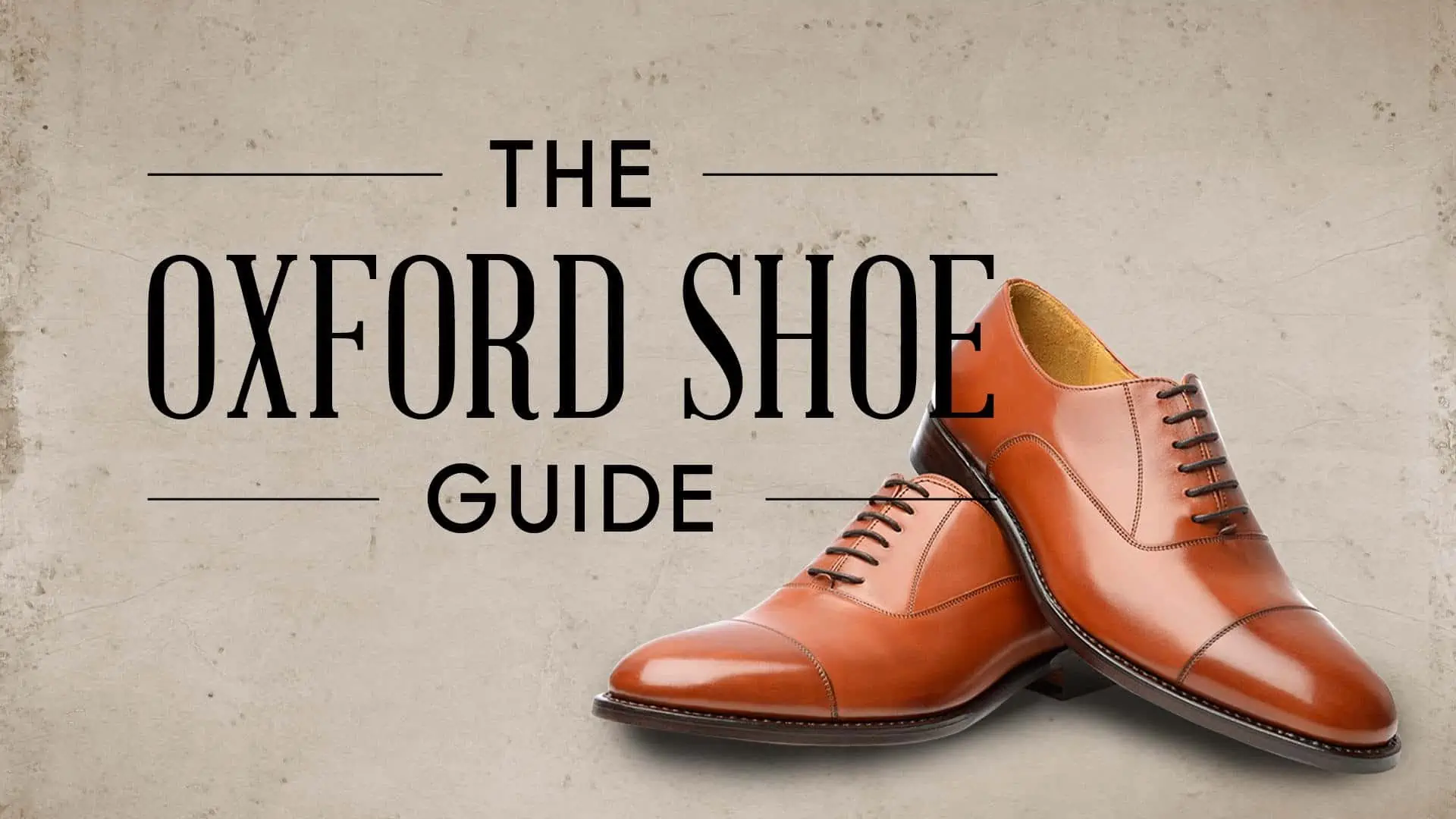
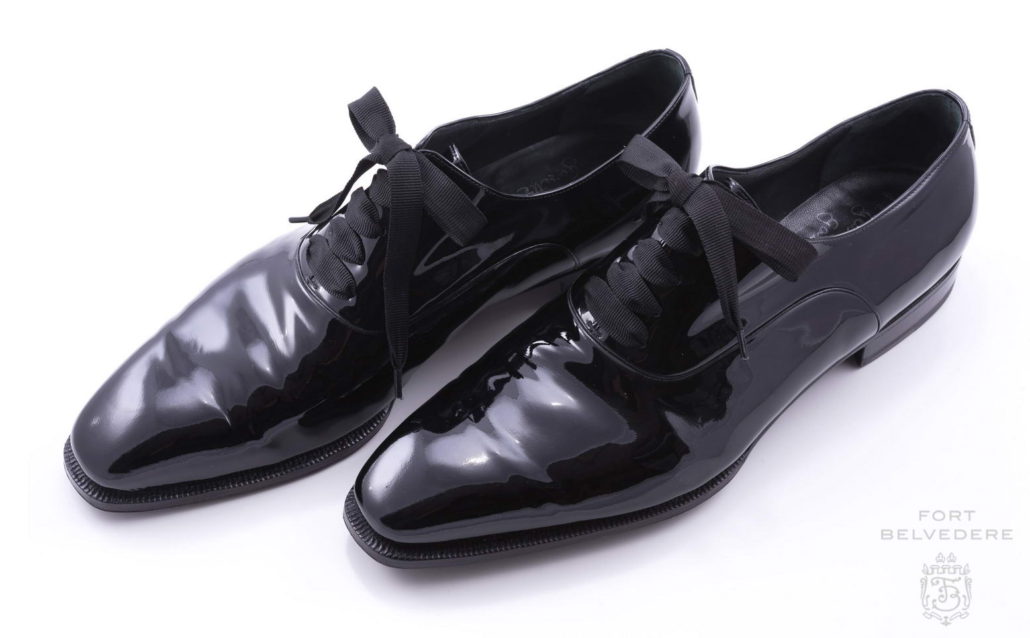
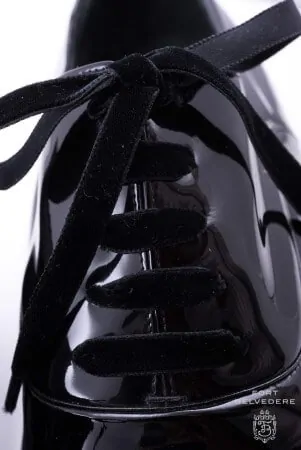
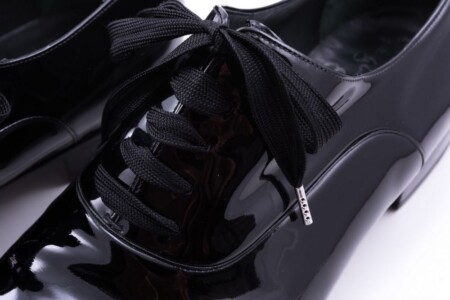
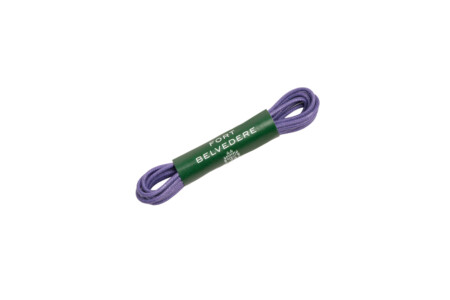
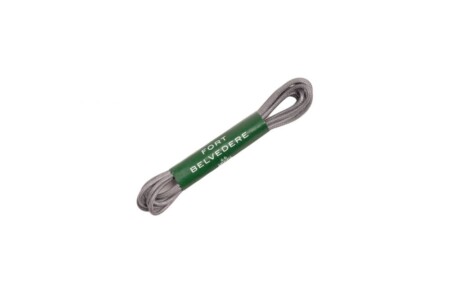
Did you really not mention Alden in your mid range list? I consider them superior to Allen Edmonds in every respect, except that they do not have a dark brown cap toe these days.
I do agree with the absence of Alden….
Allen Edmonds!! I’d go European on fashion, I think?!
I am not familiar with Alden myself, and as such I did not list them. I know the brand, and I have not tested them thoroughly enough to recommend them.
I have been wearing Alden shoes for decades. Once I discovered how comfortable their shoes were to wear all day, I rarely look at anything else. Alden styling is not fashion forward but their shoes are well made and as I said, very comfortable. I believe Alden began as an orthopaedic shoe maker.
I noticed the G&G patent leather formal wear shoes above had red laces. Would colored laces be acceptable for /with a tux?
Personally, I would stick with black. Adding red laces, is not something that was worn back in the day but if you want add a dash of color to your ensemble, I don’t see why knot. In combination with black socks, it will really stand out. Each to his own.
Hah! Shoe laces, why “knot”?
Please could you tell me where I could find the shioes above. Thank you
Which ones?
Where can I buy the shoe right above where it says cap toe oxford,it looks like butterscotch color, Thank You
I always like(d) Johnston & Murphy.. maybe too low end for your audience?.. but I always have found them extremely comfortable….. good quality… and I like the look.
In my experience, I would not recommend Johnston & Murphy to anybody. If you have some and you like them, great. But I am convinced that you can find better value at the same pricepoint elsewhere.
Do you have any examples? I have a few J&M but would tend to agree that their quality is a bit lacking after a few solid wears. I’d love some ideas for better quality!
I also lament the absence of Alden’s mention in the article. I have worn only Alden dress shoes for the last 40 years. I agree with Mr. Gray, that Alden’s shoes are superior to Allen Edmonds in every way.
I think Alden is more the Japanese car, well fitted, long lasting, as opposed to a Mercedes, or even higher, a RR.
I have seen pictures of plastic heel caps in Alden shoes but again, I haven’t seen it in person.
Like I said, I have not tested them, hence they are not mentioned.
Excellent post!
In Barcelona, Catalonia, there are two important bespoke shoemakers, Norman Vilalta and ‘Cuervo Blackbird’, to people are thinking on visit us…
Thank you Ramon. The last time I was in Barcelona was during August and both of them were closed :(.
What about crafted in France shoes made by Jacques & Déméter?
Toot quirky, Joseph. Not classic looking, in my opinion.
I have neither heard of them nor tested them, hence I cannot make any claims.
Isn’t the term “wholecut oxford” a pleonasm? Because a wholecut cannot possibly by definition be anything other than an oxford?
I think you are splitting hairs here. However, even if we want to go into such detail, I don’t think you are entirely right. The orignal Oxford had vamp and quarters with the eyelets being on the quarters. With a wholecut the eyelets are on the vamp. Then there is also the wholecut Derby shoe…
Thanks for sharing the picture Rolf.
So who is the best maker? Most comfortable and most durable, with best leathers? Is that store next to Harrods one of the best, almost opposite McLaren?
Best is relative to your taste and needs. There is no best for everything and everybody.
Is Berluti really No.1? What about John Lobb?
A few years ago, I saw the inside of a Berluti RTW shoe and for its price it was bad value, but then again they offer designs, you won’t find anywhere else…
Thanks for another great feature.
You’re welcome!
For a black cap toe Oxford, are calfs worn the same way as Cordovans or is one perhaps more casual? For business settings among others?
What do you mean by Cordovan, the color or the leather? Cordovan color is reddish with brown undertones, Cordovan leather is made in black and various other colors.
In reference to cordovan, I am referring to shell cordovan, the leather. I love that they do not crease and have to imagine that they are great for formal occasion by that virtue. However, they do possess a more toned down sheen than calfs, which may be due to polish. Any thoughts?
Cordovan may also describe a leather of goatskin or a horse hide . Some maker have with their collection a cordovan range which has included a colour variant to maroon . Further thoughts ?
Who is the best maker? Duckers in ‘the Turl’ (Turl Street, Oxford). Was fabulous in the 80s/90s when the Purves brothers owned it and, as a massive bonus, sold Hardy fishing tackle as well. Got a fabulous Hardy St George there circa 1989. Still the best you can get IMHO. Mike
Andrew’s comment from April 15th at 9:02 p.m., illustrates an important point about shoes and other men’s furnishings. Many brands that used to produce excellent products, like Johnston & Murphy shoes, began to cut corners in order to hold the line on prices. The same thing happened with Florsheim shoes. Forty years ago, Florsheim made excellent shoes. Today, they are total garbage.
What’s your favourite shoe brand sir?
Hi,
excellent article. Which of the budget brands would you recommend? I’m searching for a new pair of dark brown oxfords? I’ve had bad experiences with the last of shoes from scarosso.
Great article! What’s your favourite pair of shoes and why?
On the 9th of this month (March 2016) you told us in the button boot guide that button boots had been introduced by Queen Victoria, who was born in and succeeded to the throne in the 19th century. Now you tell us that button boots had been around since the 17th century: “During the 17th-century men’s footwear was dominated by boots. Often high and tightly fitting with buttons instead of laces, they were worn both outdoors and indoors”
Which is correct, please?
Dear Raphael,
This article is sensational ;
Of all styles Oxfords really cover the Waterfront .I recently purchase a Crockett & Jones in oxblood ( pictured above ) and a favourite I wear sparingly from ARBITER in Italy are black reserved for morning wear and Derby Days at the track . I am thrilled by the precision and research done here .
We’re glad you think so. Thank you for the kind words.
First on your list of the characteristics of the oxford shoe is closed lacing system but you illustrate the wholecut oxford with a photo of a George Cleverley (or Cleverly as your caption says) slip-on with elastic gussets and dummy laces – the absence of gaps under the dummy laces and of knots at the top of them are two clues.
Exposed ankle is another item on your list. Is that not a characteristic of any shoe – or to put it another way, the very difference between a shoe and a boot?
Dear Raphael,
first of all thank you for this wonderful article. May I ask a question?
I am in my mid 20s and wish to acquire a nice pair of Oxford shoes. Would you rather recommend a plain cape toe oxford as compared to a quarter brogue oxford in black. I very much do enjoy the second option as I believe this is a more versatile shoe that also can be paired with chinos whereas the plain version might not look right on anything except a suit. As I do not expect to wear suits very often and budget does not allow both I would very much appreciate your thoughts on this.
Thank you very much already in advance, this is highly appreciated!
Best regards and happy easter to you and your family,
Alexander
The Gaziano & Girling shoes look amazing. I need a pair like that.
This is an absolutely fantastic guide. Love the breakdown between what an oxford is and what a Derby is. Most guys don’t even know that there’s a difference.
Sven – I keep reading that you say not to et the same shoe in different colors but its so hard as a guy. My first pair of Allen Edmonds were black McClain’s (discontinued) and I got them in Merlot. Now they have a Strand, Strandmoc and Strandmoc in Seude. Is it acceptable to get one of each of these shoes even though its technically the same style (Brogue Toe-Cap).
Why is it so hard? Shoes come in thousand of shades of brown. Buying the same style of shoe on different lasts is ok once you have the first 20 pairs, but until then, I would not suggest to do that.
Rafeal, what about chocalate suede brown semibrogue oxfords for a casual look. Im into dressing casual denim kind of guy.
Possible, but I think the Derby would be preferable.
Hey Rafeal, why do feel as Paul Evans shoes are inferior? Several people you did interviews with recommended them’
The lasts are not refined, the patina comes off easily, and for the price, you can get better blake rapid or goodyear welted shoes.
Paul Evans has approached us many times asking us to review their shoes, but we always declined. I have tested one pair and seen many other in person, and I would not buy them with my money.
Why do others recommend them? I do not know, maybe they think they are good enough, maybe they got them for free or maybe they got paid to promote them.
Thanks for being honest and not a fake falsely promoting such a brand. I bought a pair of whole cuts and the heel is wearing out with only about 8 wears.
Are chocolate suede oxford/chukkas ok for the summer
I must ask, should we consider Fred Astaire beyond the rules of style? I recently viewed a photo of him on Voxsartoria where he has clearly cross laced his suede Oxfords.
Read the whole article plus comments; now am going to backtrack and read the article on what constitutes a brogue. I need the book for my brother !! Absolutely fascinating, and how wonderful that you are all so interested in the details; I never thought men cared that much about their garb.
Loved your guide! I want to buy high quality shoes like you site recommends (I was eyeing a pair of acemarks), but I’m worried about the fit. I am based in the US and so I’m worried if the fit isn’t good I won’t be able to return them. Any ideas how to overcome this? Alternative is to buy a pair at Nordstroms I guess?
I would like to recommend the dutch brand van Lier. Since I joined the navy 30 years ago I wear those shoes
Are you familiar with the USA company, Johnston and Murphy? I have Oxfords that are Cap Toe, which I have enjoyed for forty years. Yes, at least that length of time. Please, I would really appreciate your comments on those shoes.
Awesome product share with me. I like leather shoes and you share the various types of shoes. I like your blog. Thanks for sharing shoe guidance information. It’s very helpful for me.
It is our pleasure. :)
こんにちは。
パワハラ指切断でおなじみのド屑県香川のド屑企業フジフーヅでございます。
裁判も会社ぐるみで偽証をして無事乗り切ったド屑でございます。
餃子シュウマイなどをスーパーで販売しております。
店頭で見かけましたらそのときはご購入のほどどうかよろしくお願い致します。
Excellent article Sven. Thank you very much for your explanations and thoroughness. Love your articles, videos, and Fort Belvedere products. Oh, and recently I had the occasion to work with your Customer Service Department and came away satisfied and impressed. Keep up the good work!
Where on the formality scale would the Balmoral Oxford fall when compared to the Plain Oxford (either with or without a cap-toe)? Thanks for the great article, I throughly enjoyed it!
Glad to hear you enjoyed the article, Jared! Realistically, I would consider the Balmoral construction is equal to the “standard” Oxford construction. Formality will be determined by a few things, such as whether there’s any detailing (like broguing) that will reduce the overall formality, as well as the last shape, colour, and material choice that may increase or decrease formality. For example, a tan suede captoe Oxford is less formal than black polished calfskin Balmoral Oxford, as both the colour and material choice are casual in nature when compared to polished black calfskin.
Did you guys hear of the D2C brand called Lethato Shoes which makes premium quality Handcrafted Leather Shoes for Men? Each shoe is made by hand by experienced craftsmen.
I got 2 pairs from this brand and I absolutely love their shoes as well as their boots. I bought it for an event and I got lots of compliments for wearing their shoes.
So did you ever tried their shoes? If so let me know.
I regularly buy Oxfords for business casual but I’ve had it with lower-end brands that use hollow plastic or rubber heels that wear through or crush over time.
Can you recommend those entry-level to mid-range shows that have SOLID LEATHER heel construction? Strangely, solid heel construction is not easily attributed to products sought through google, so a litle help if you would please.
Hi Torin, I’d suggest taking a look at the brands featured in Raphael and Preston’s review of dress shoes under $300. Hopefully, you’ll find something useful in there.